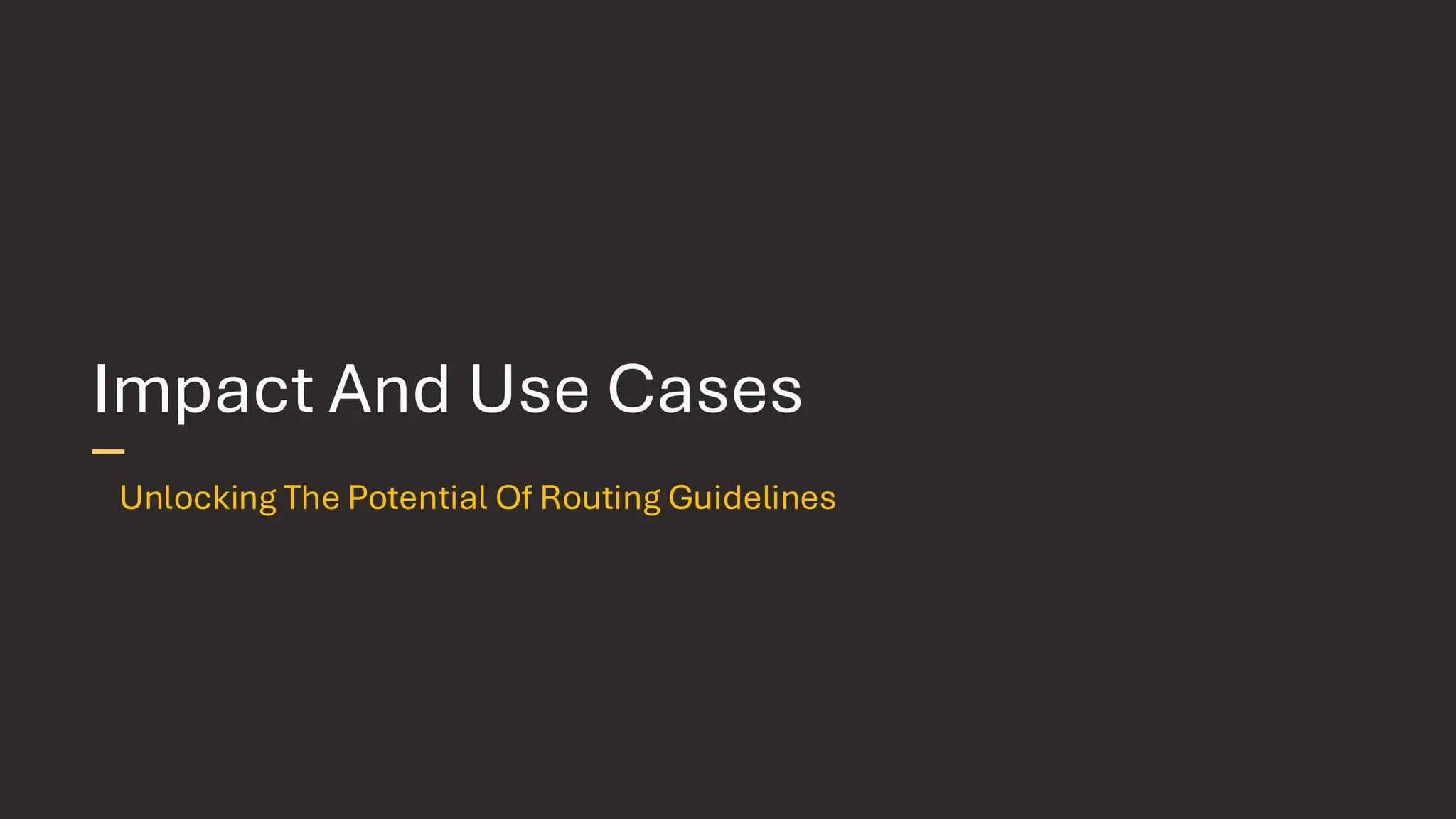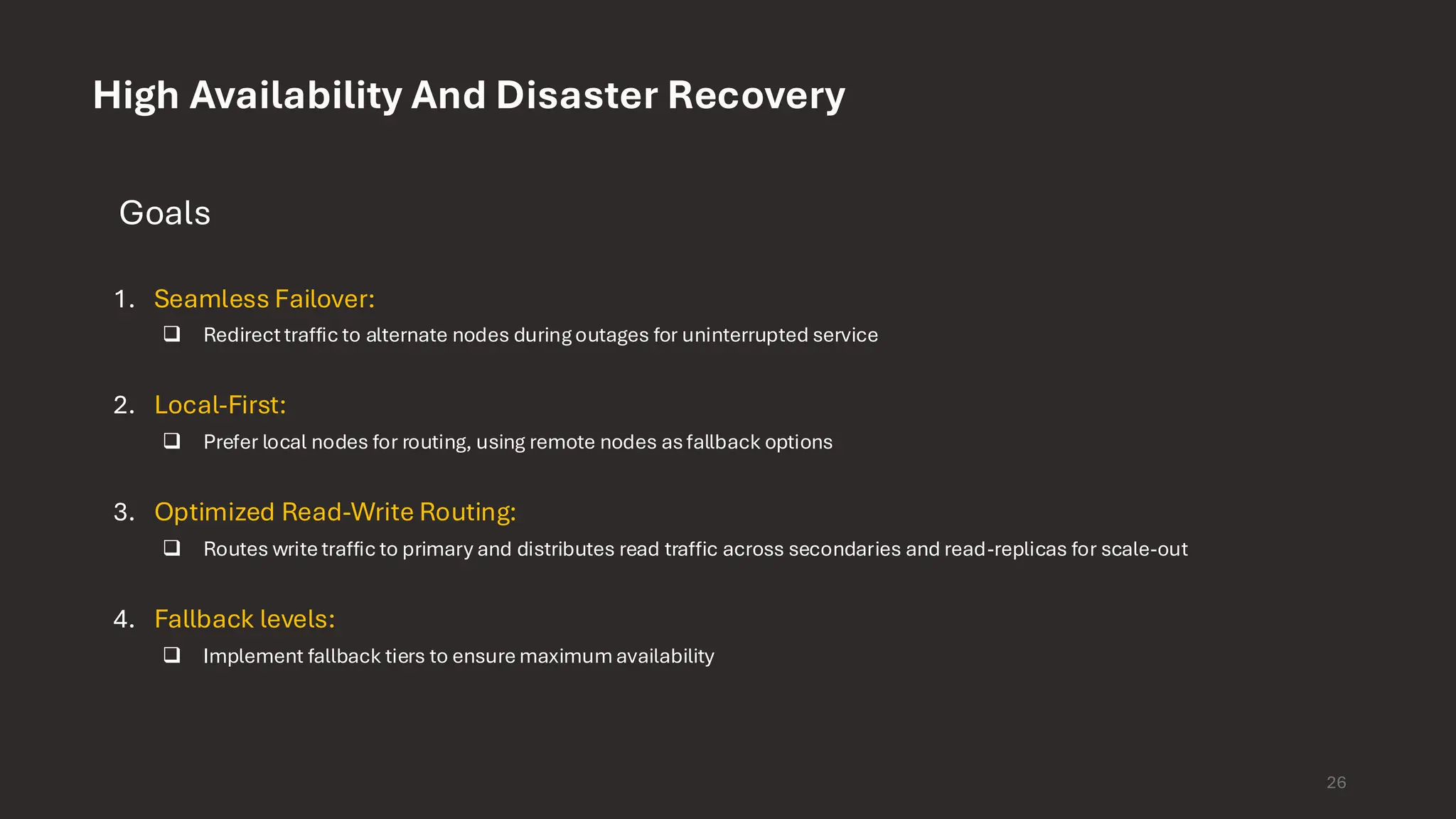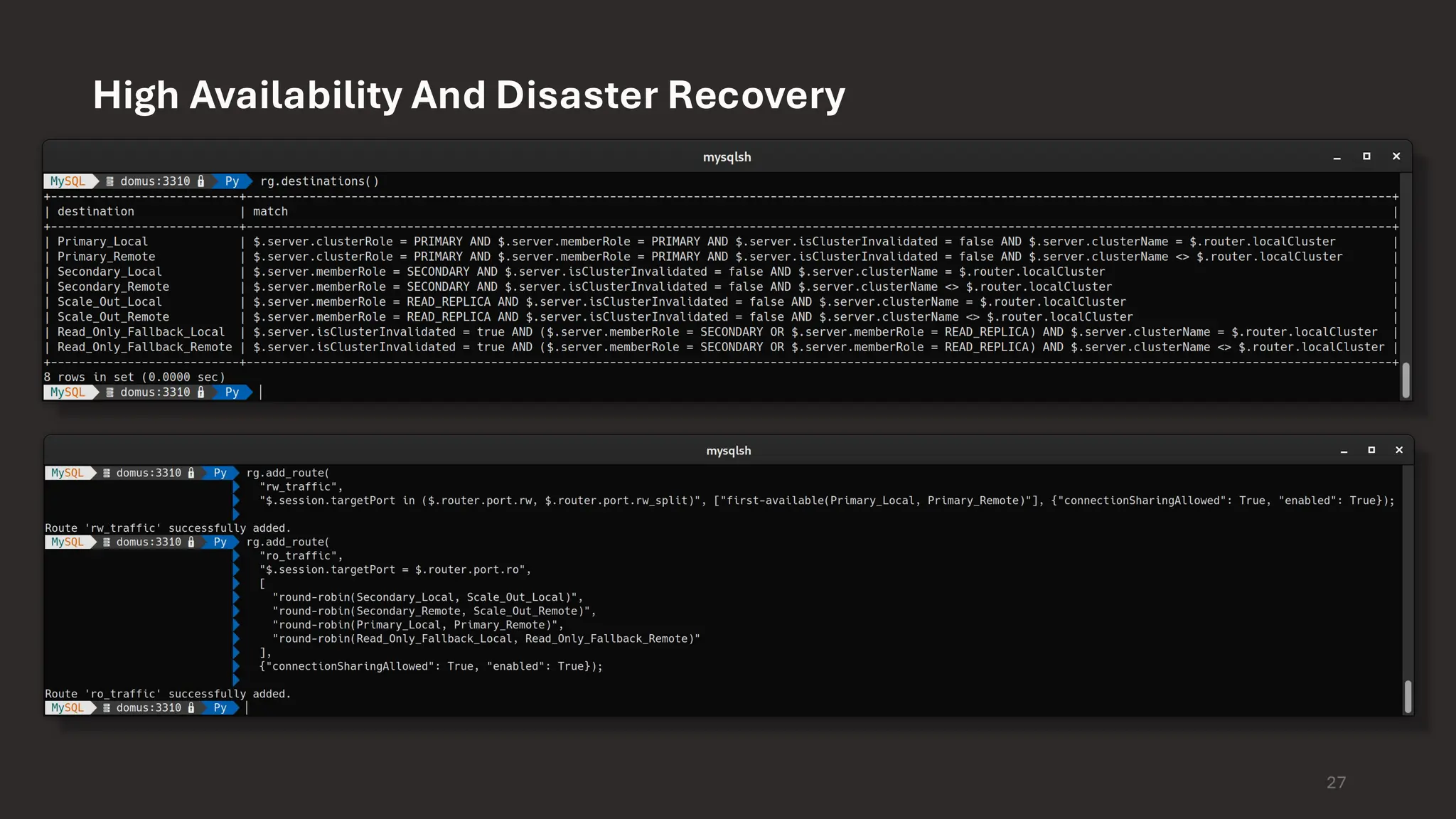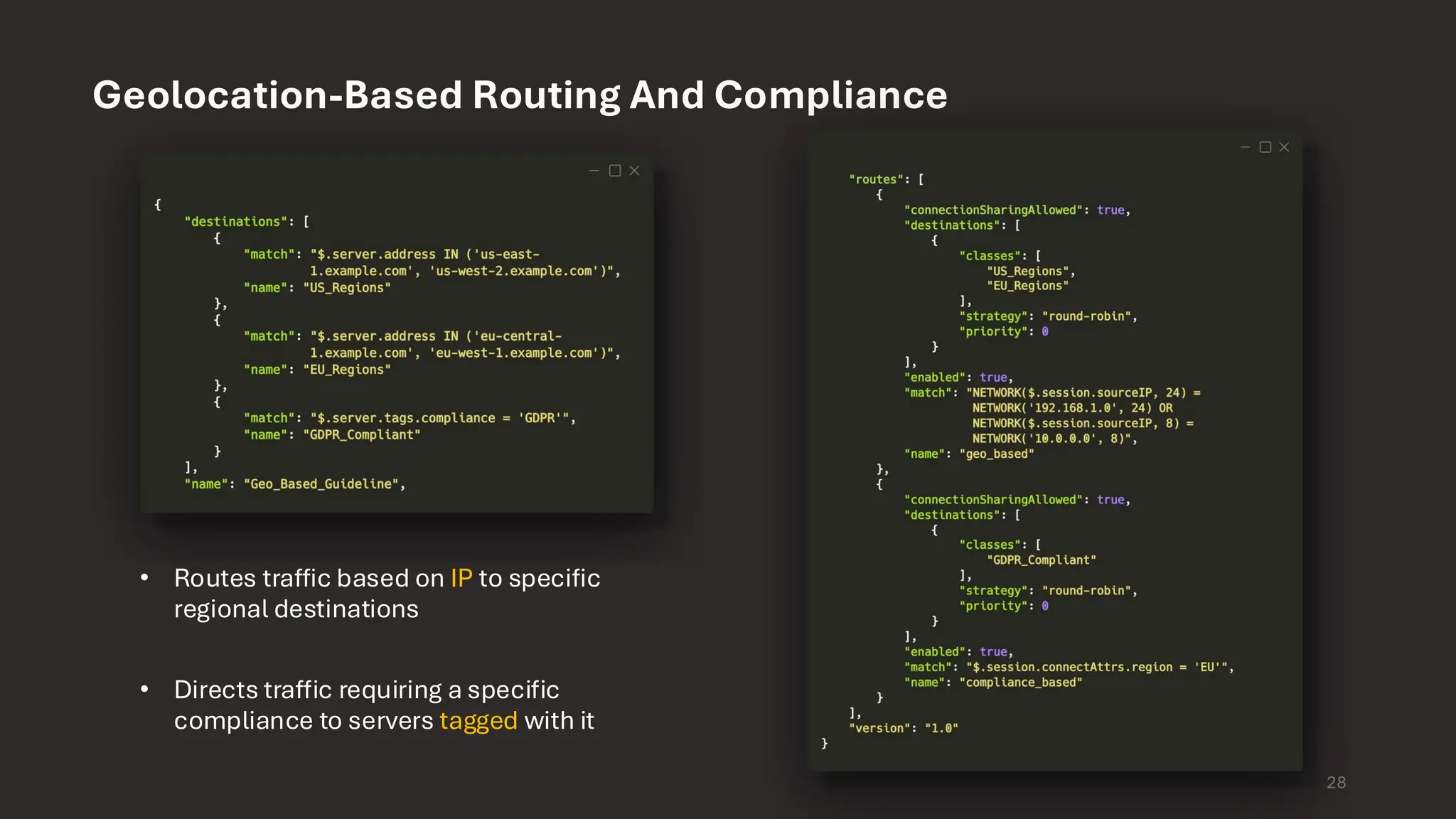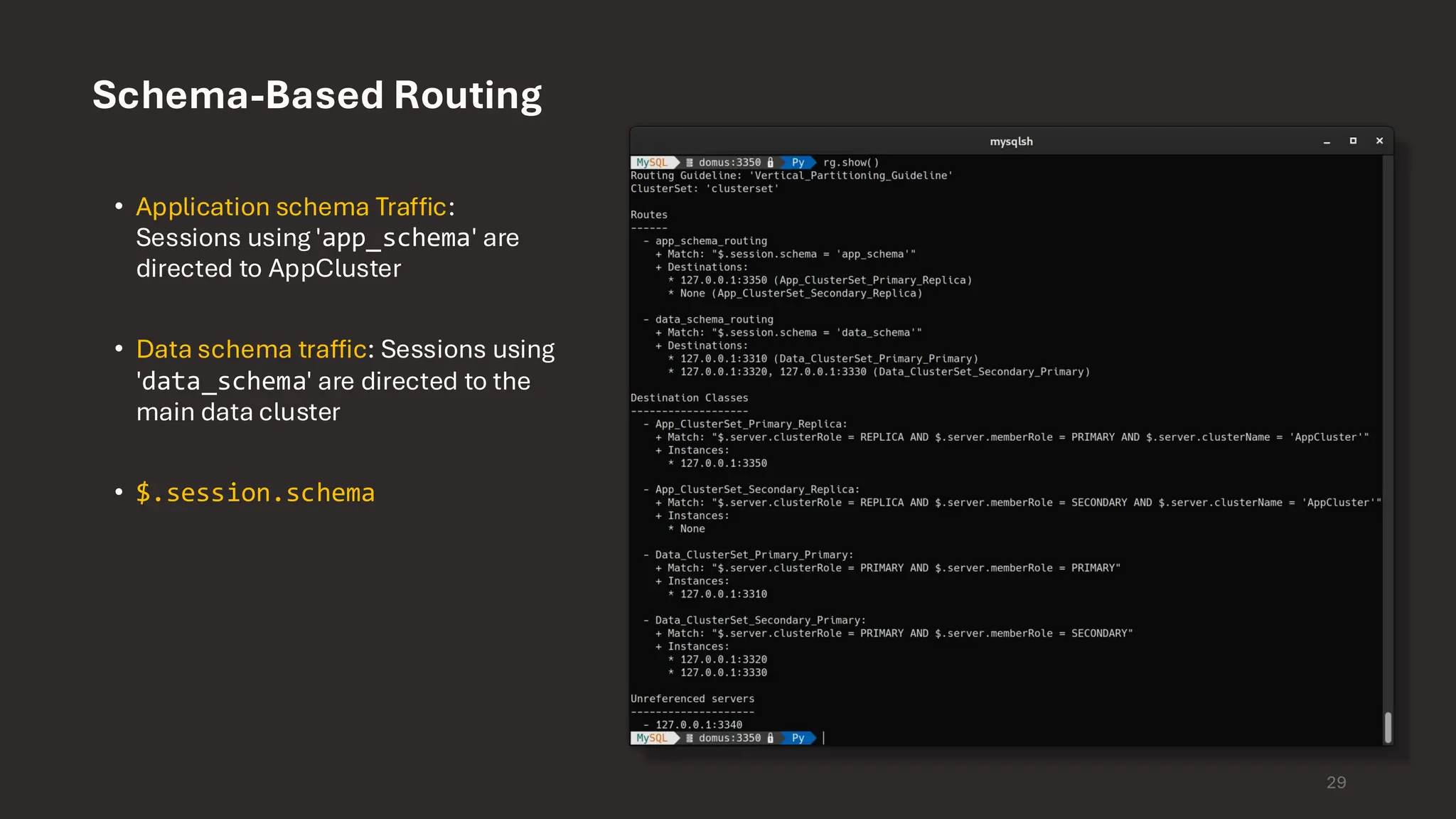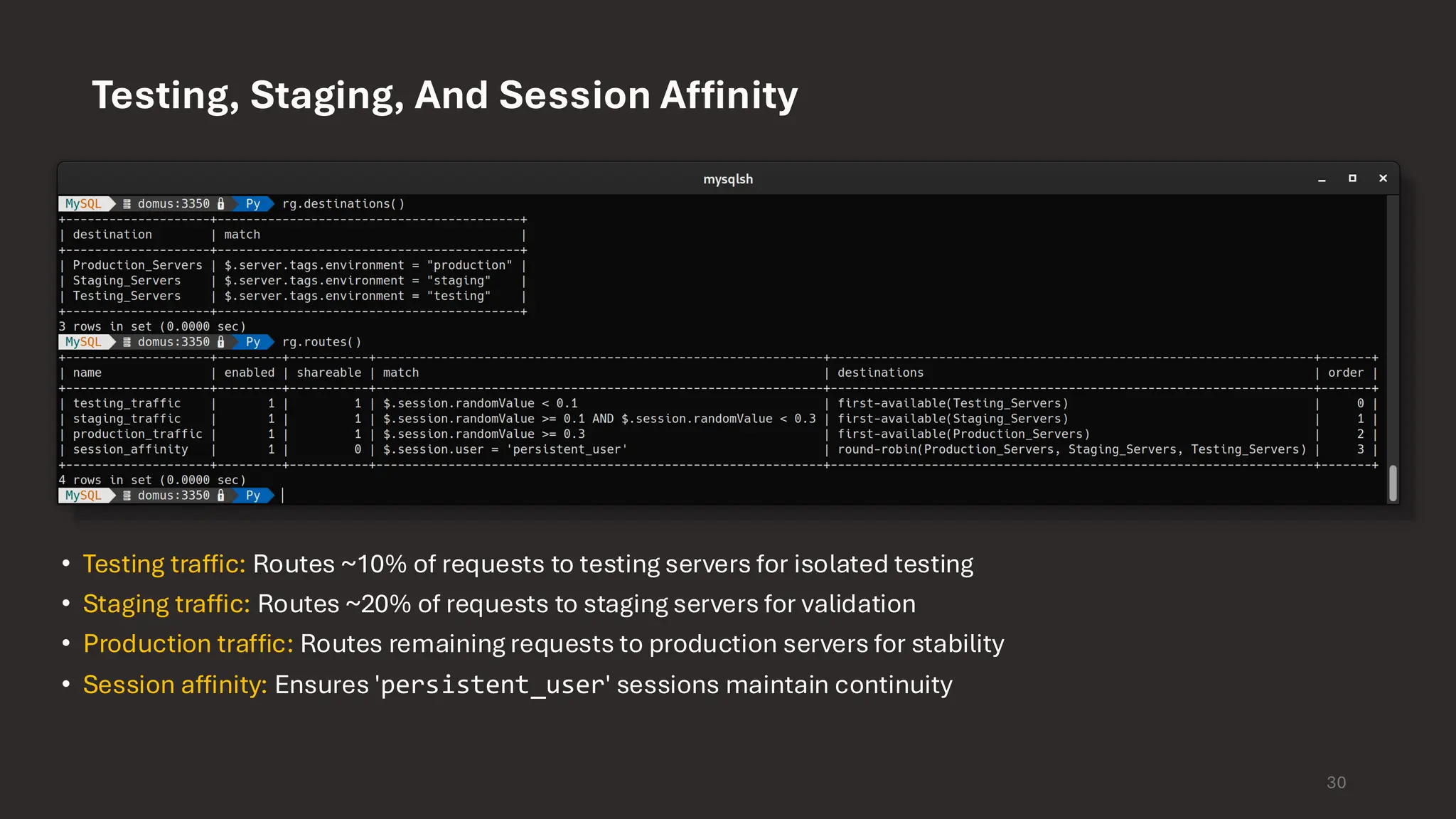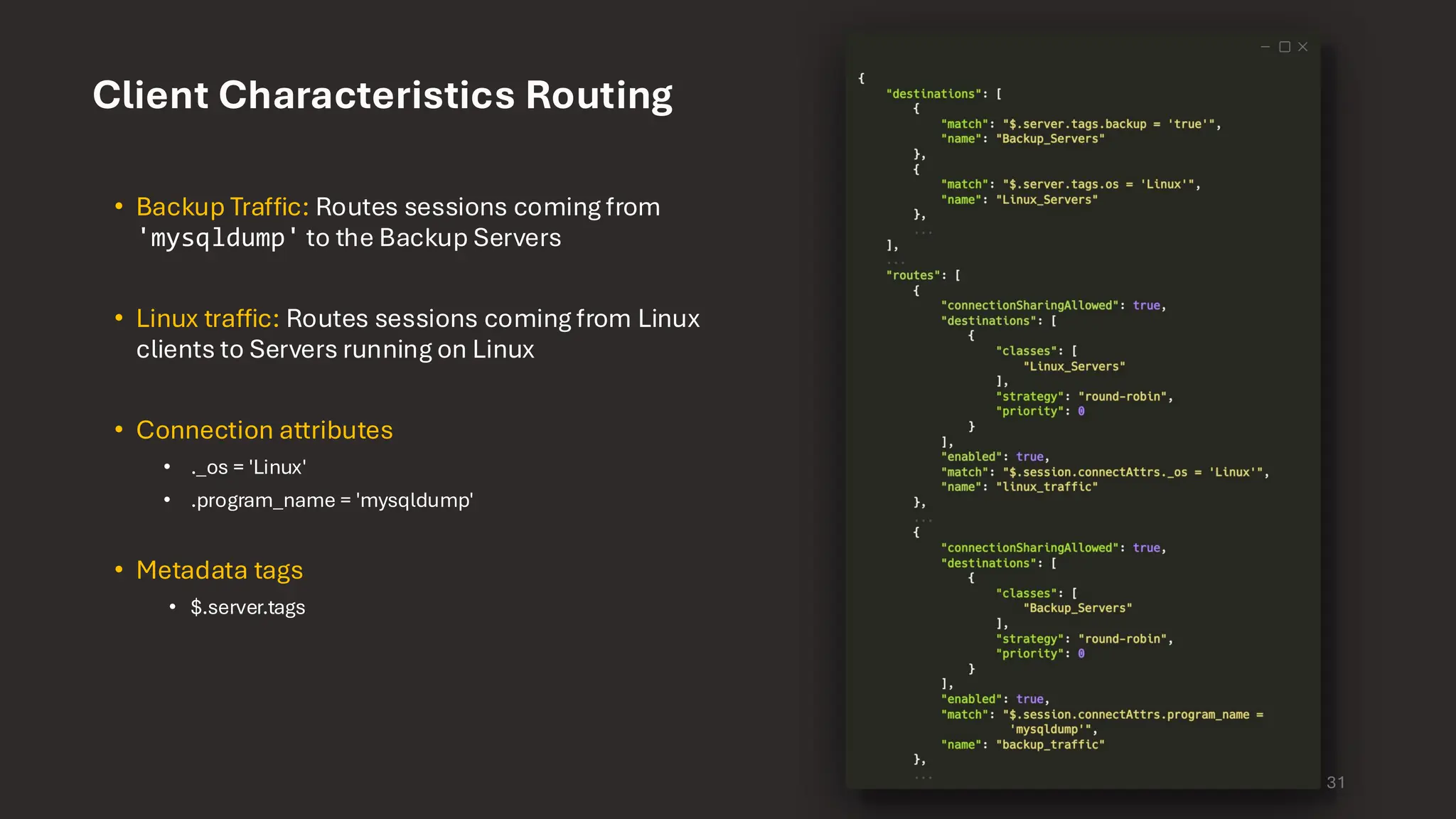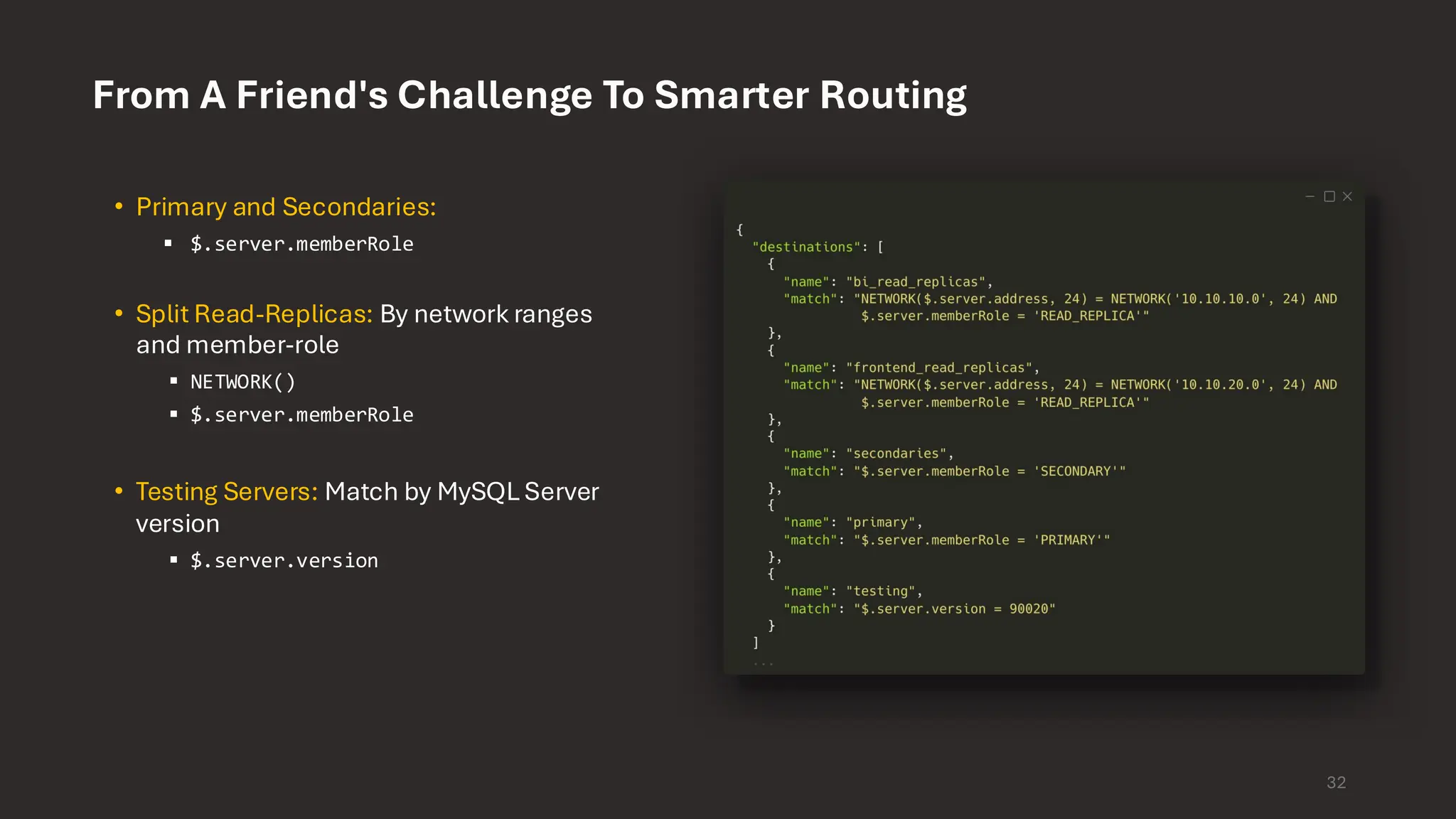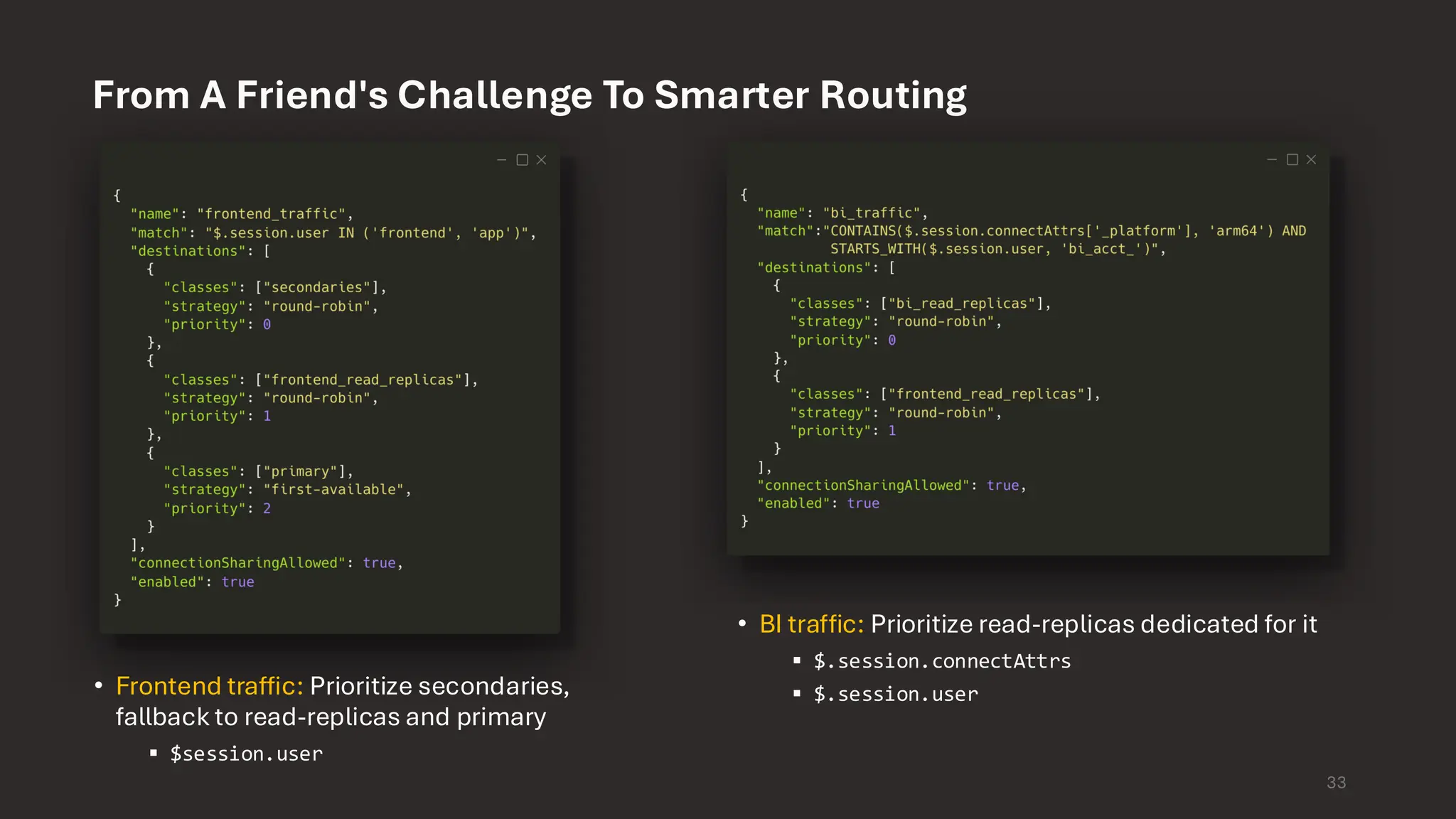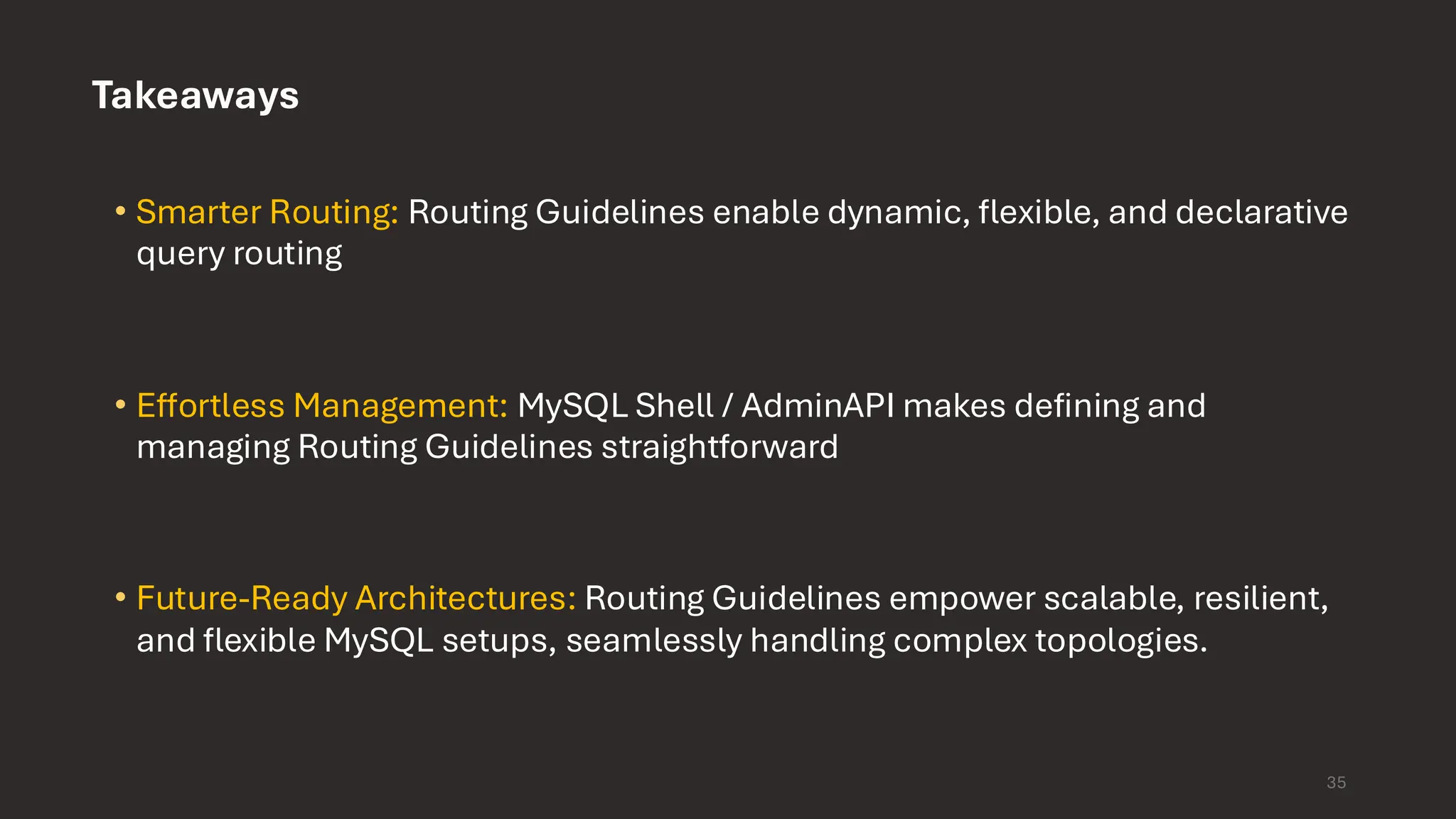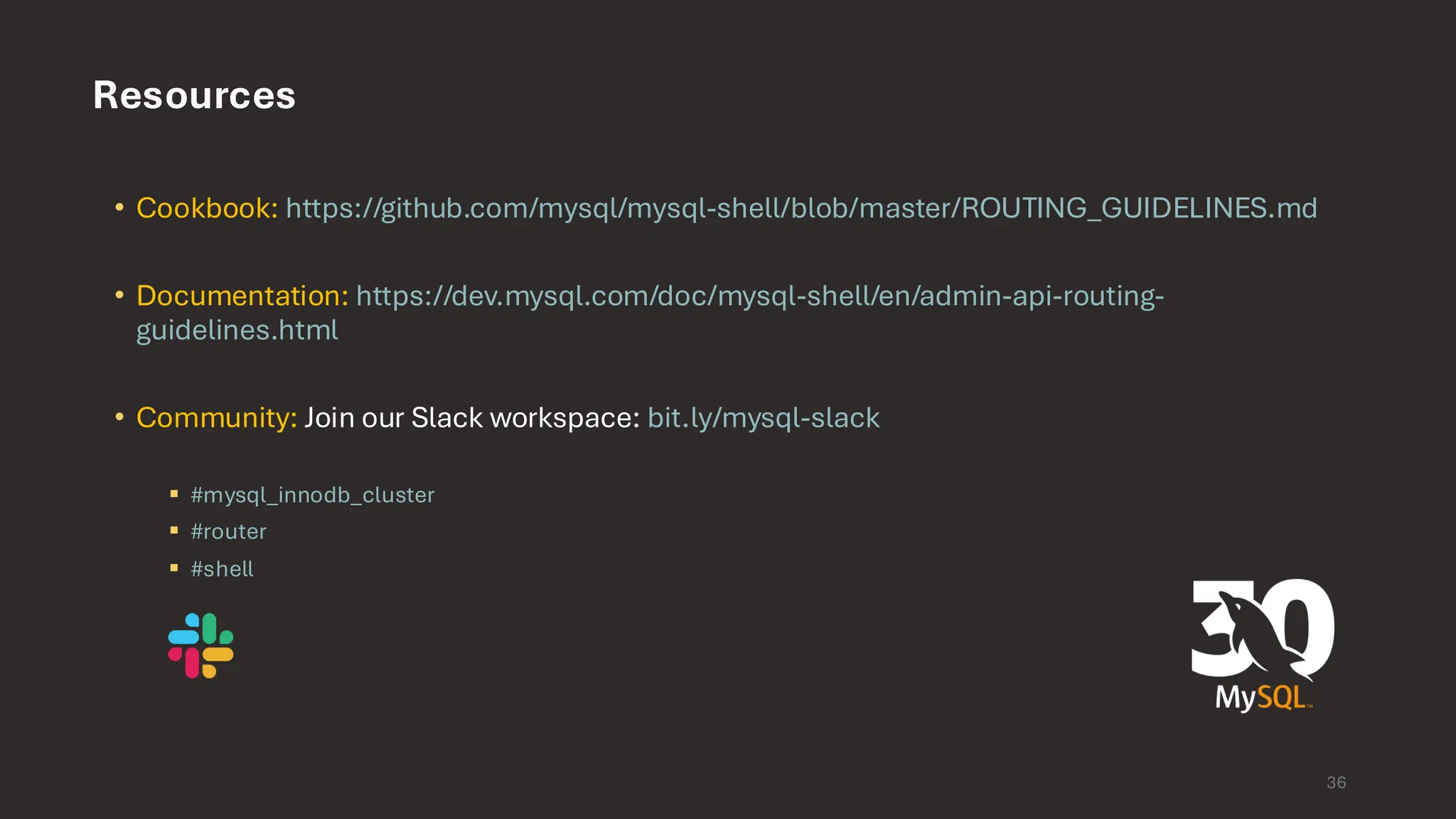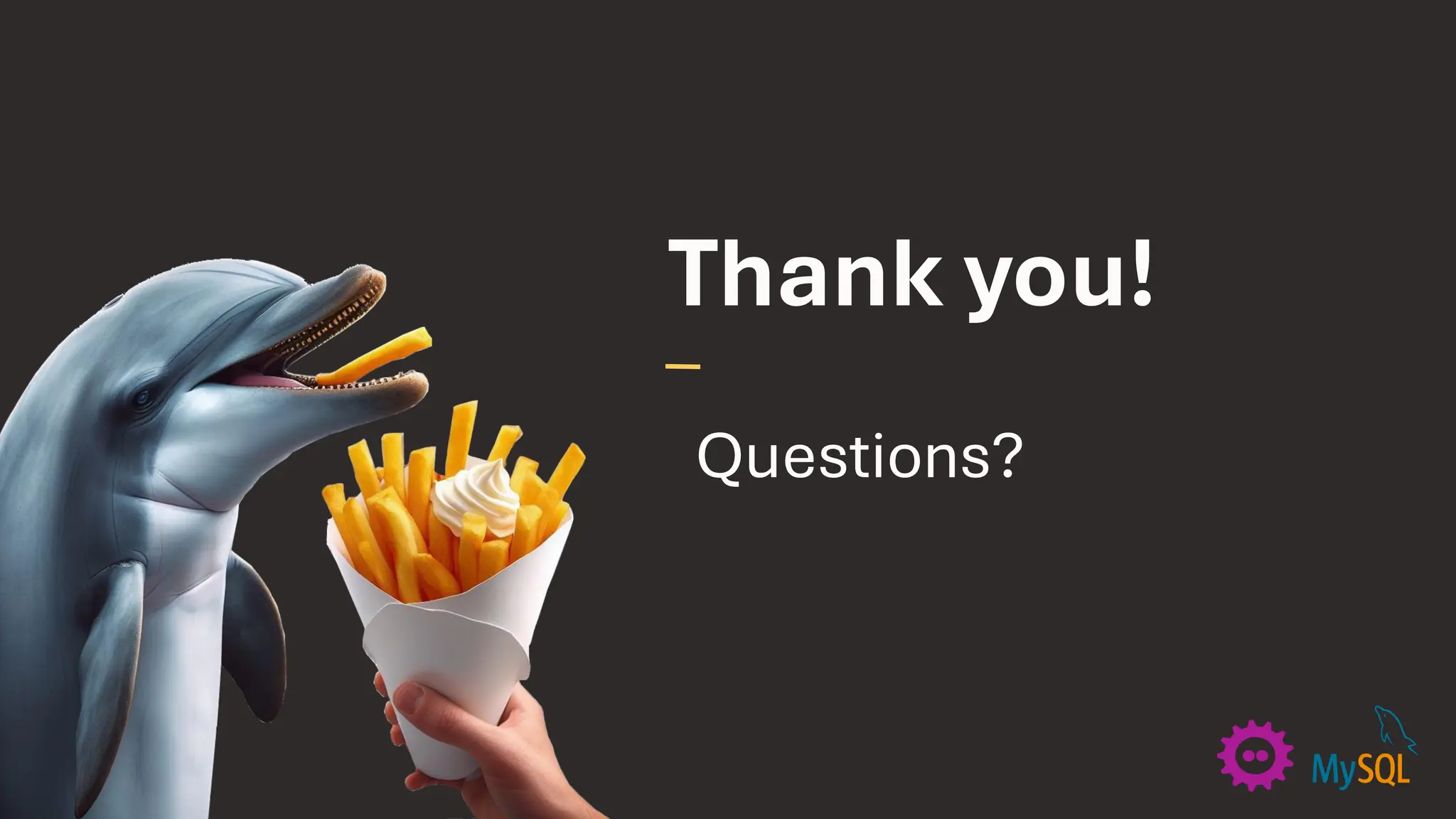The document discusses advanced query routing guidelines for MySQL architectures, highlighting the need for improved routing mechanisms amidst evolving database setups. It identifies challenges with current routing methods, such as latency, resource prioritization, and schema-specific routing, and presents new strategies for dynamic and efficient query management. The guidelines aim to enhance high availability, disaster recovery, and compliance through smarter, adaptable routing techniques incorporating local and schema-based approaches.
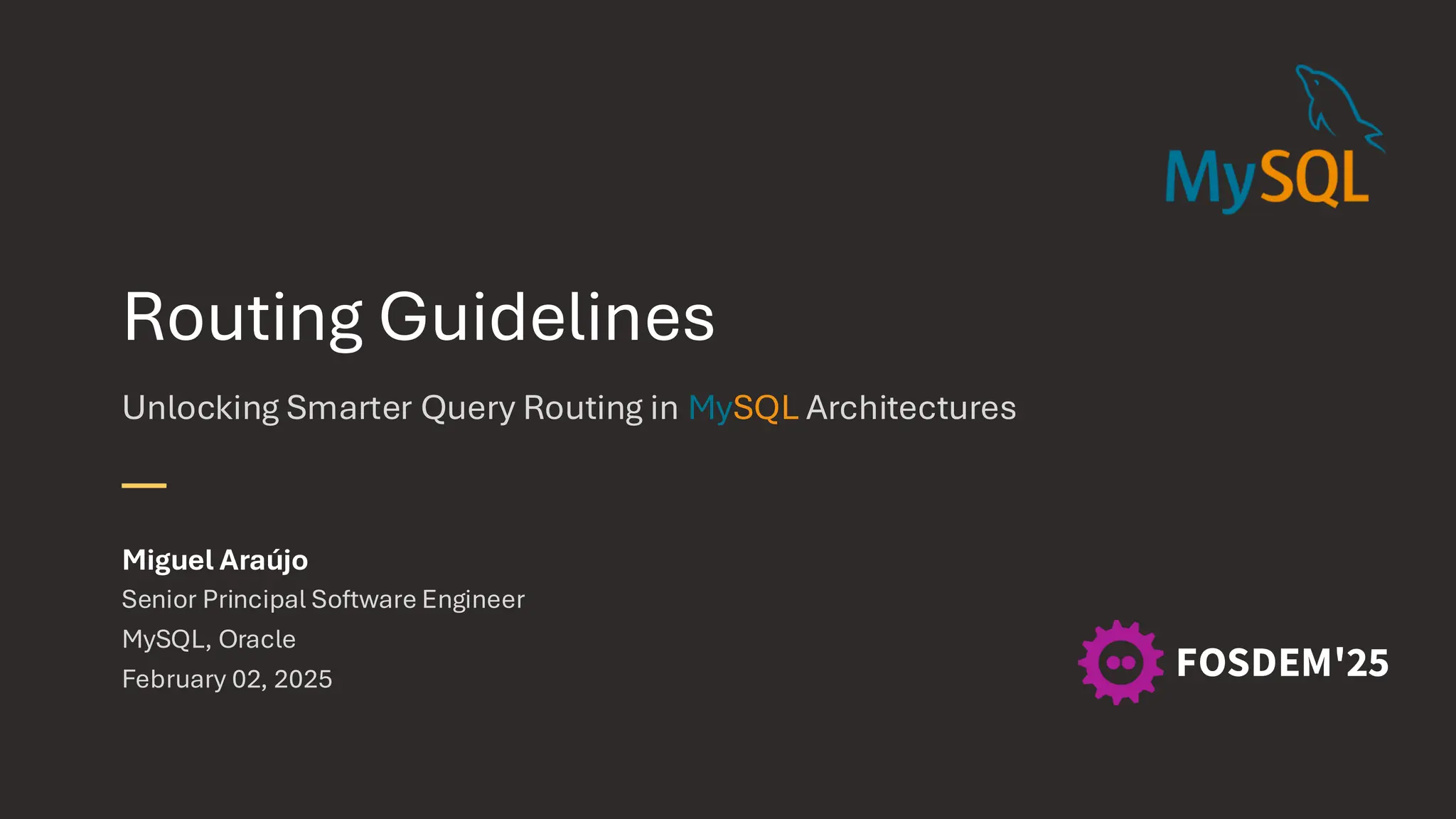
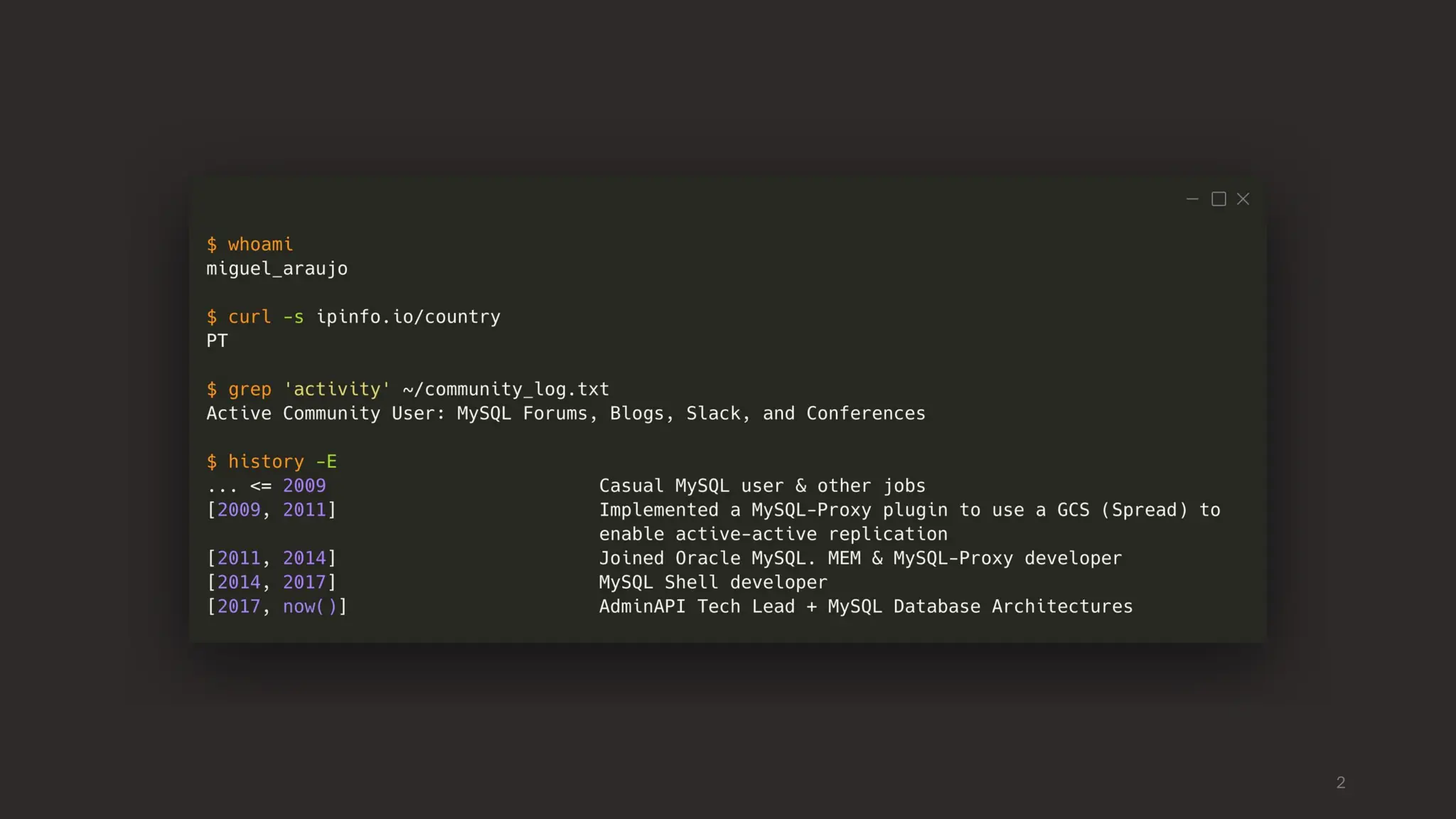

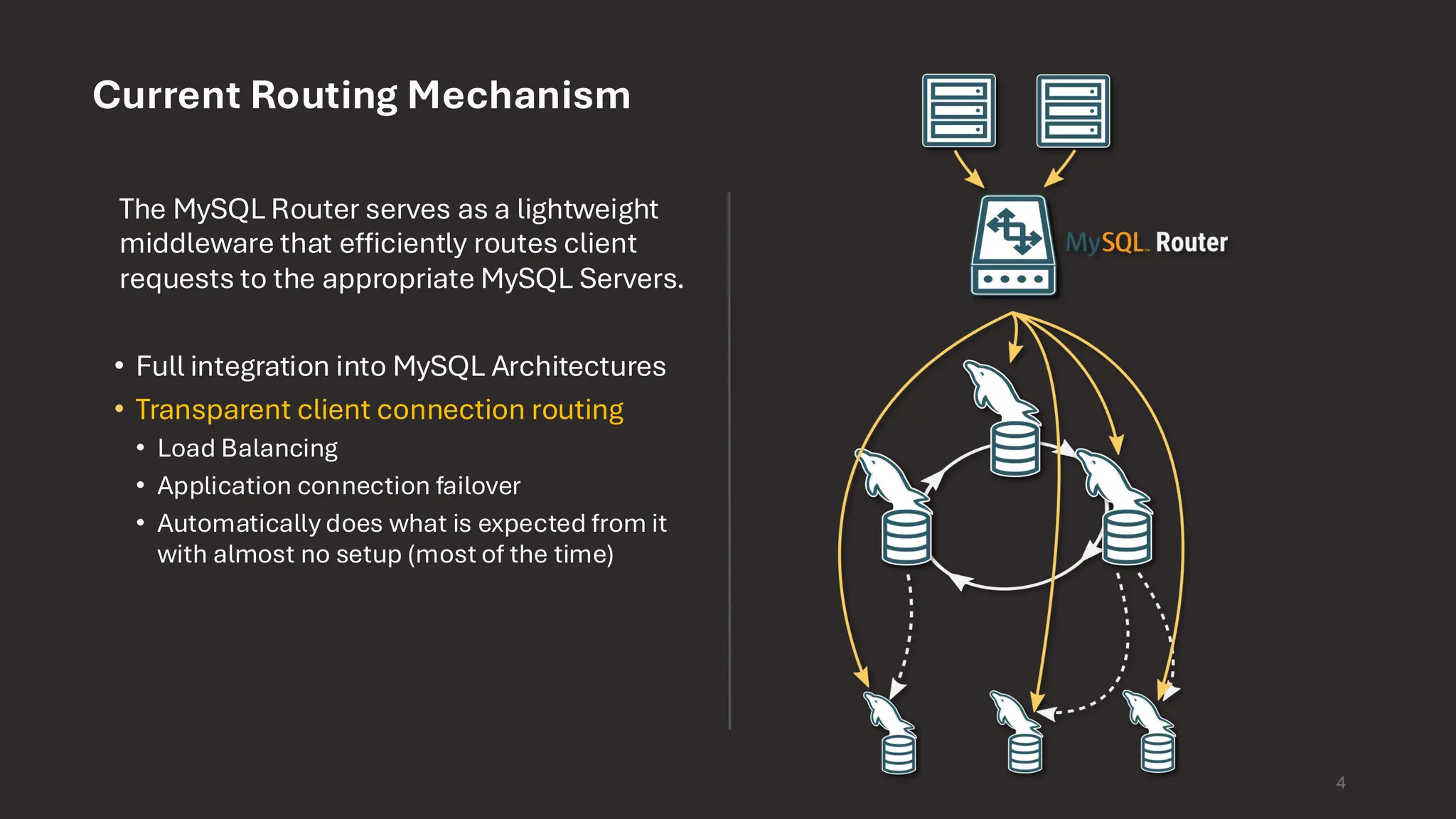
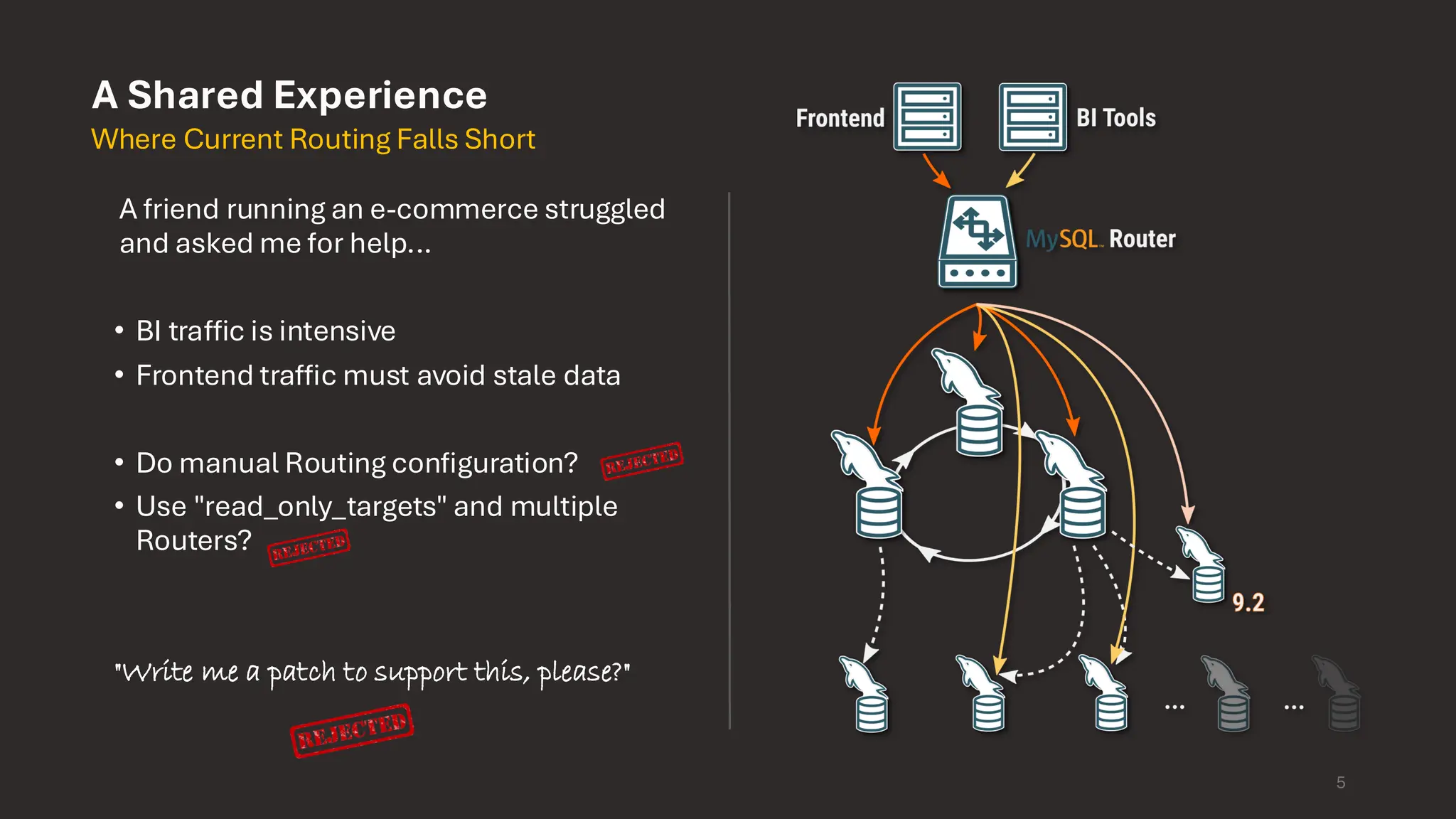
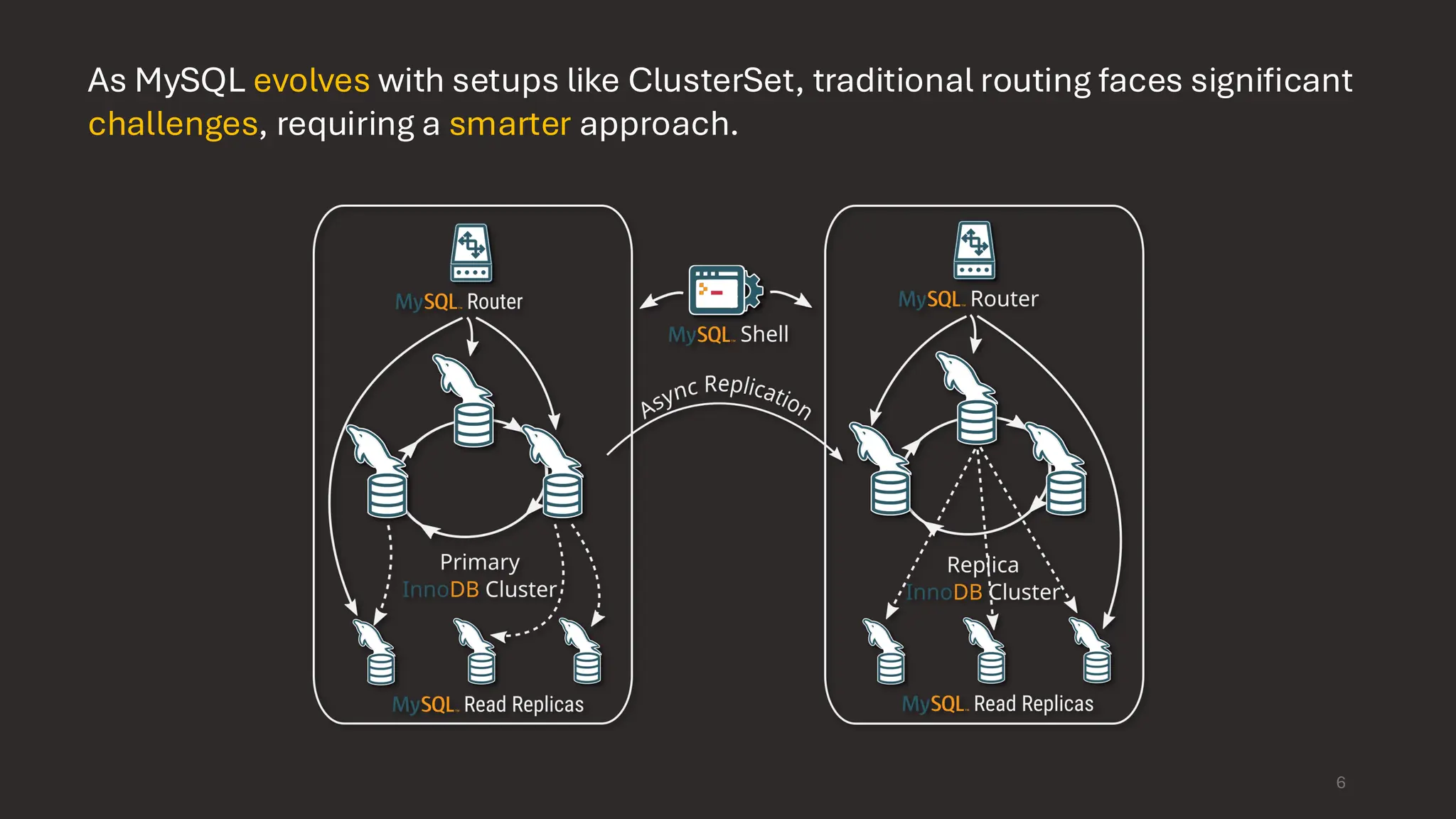
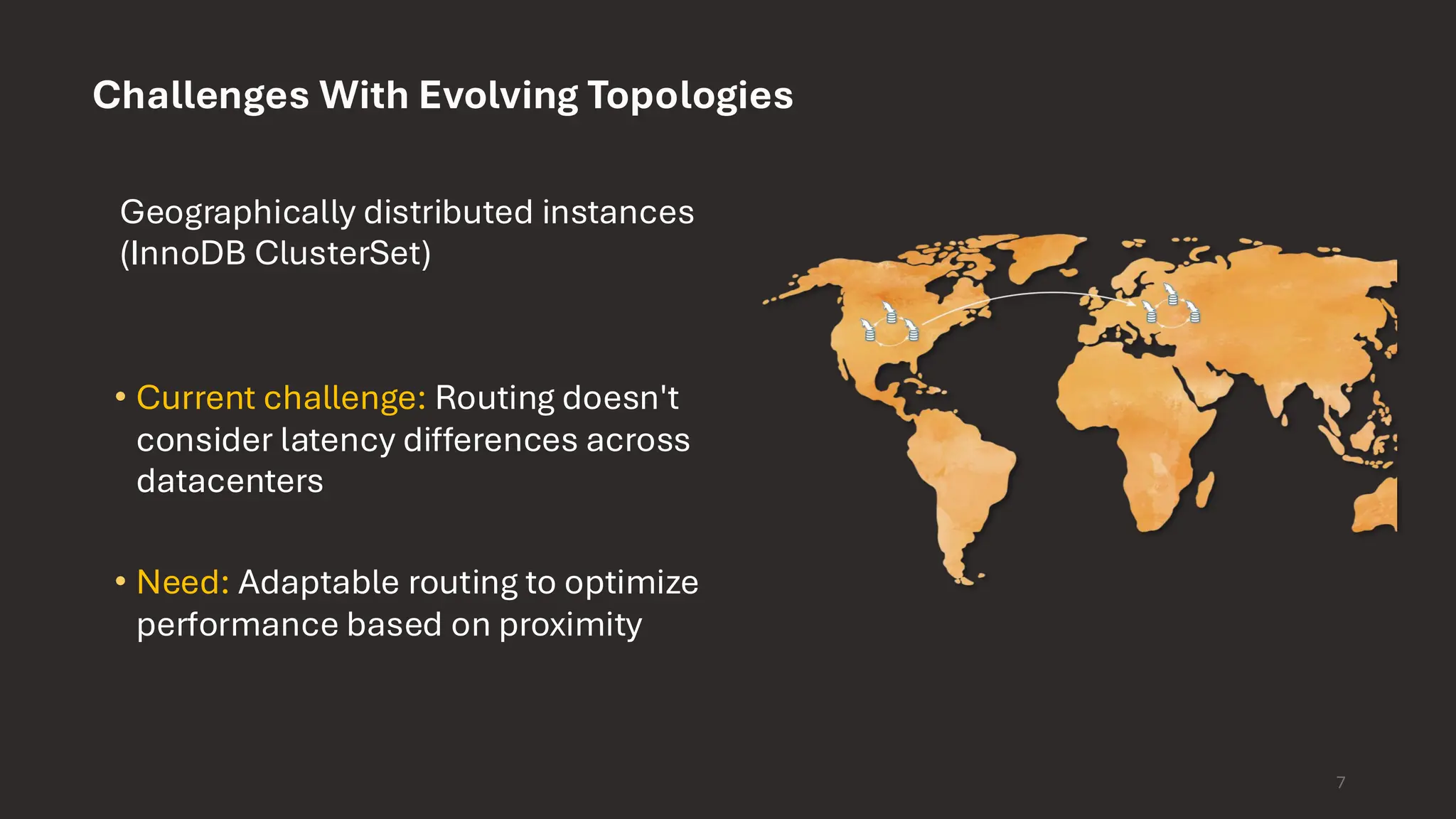
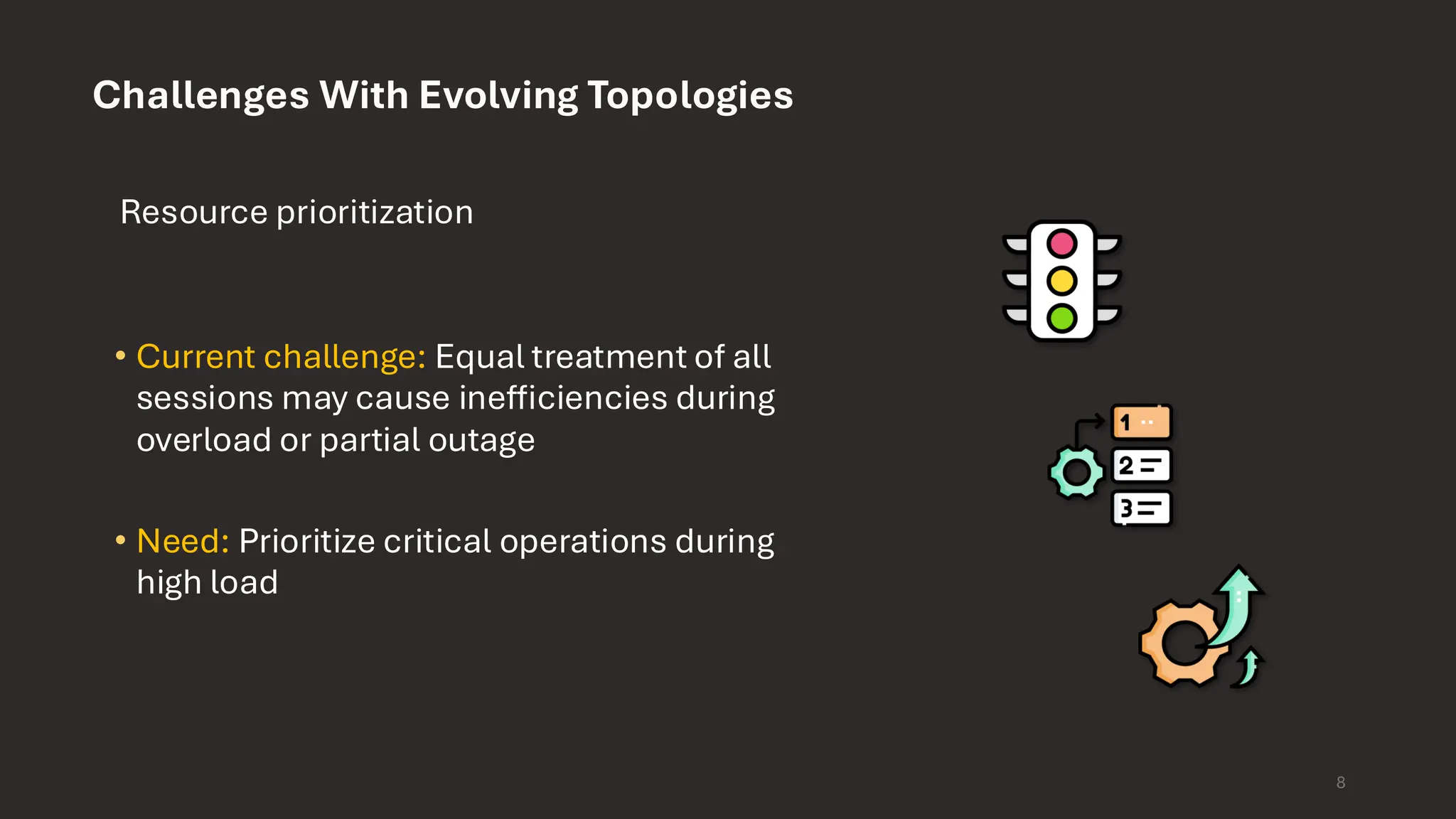
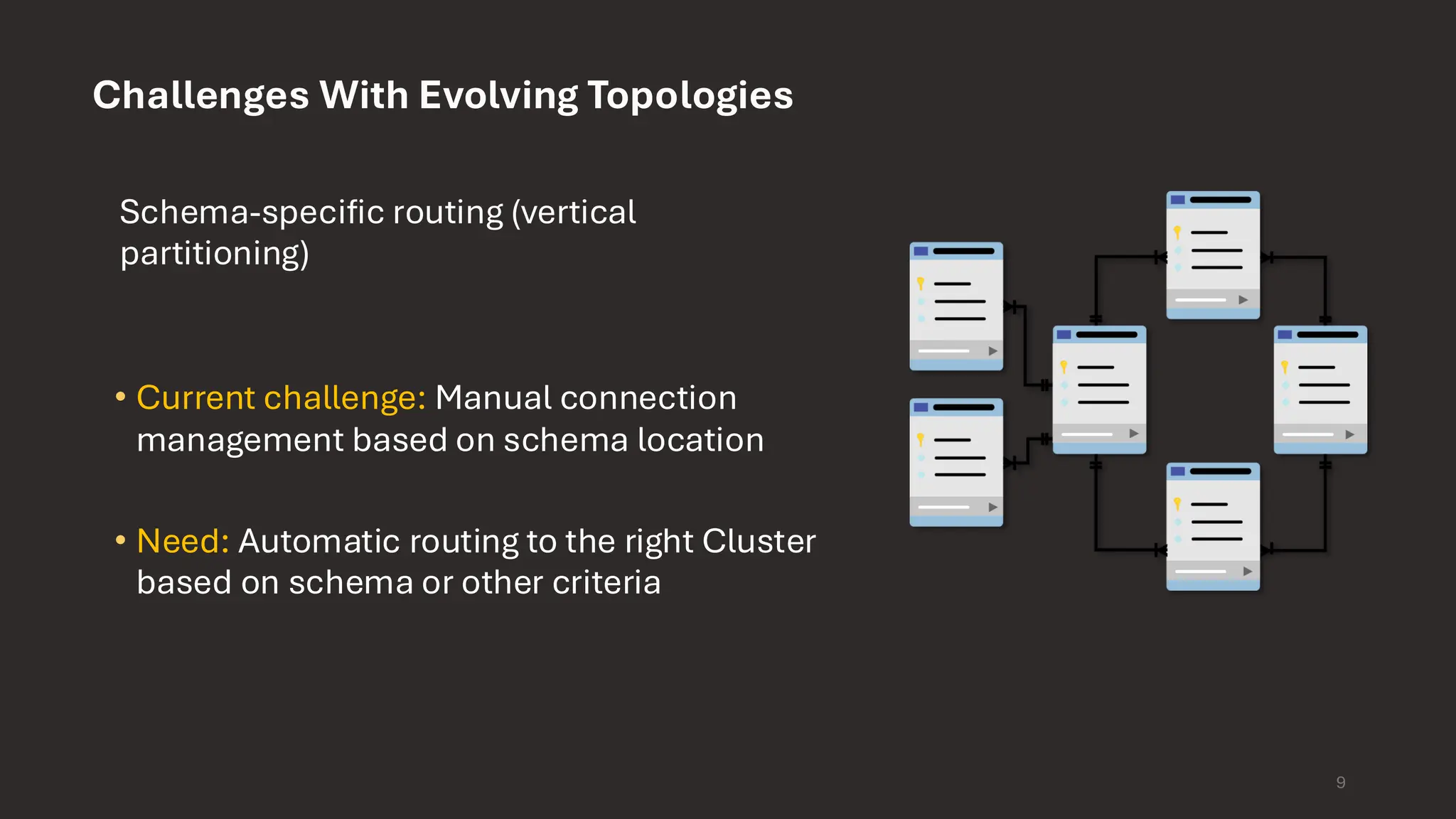
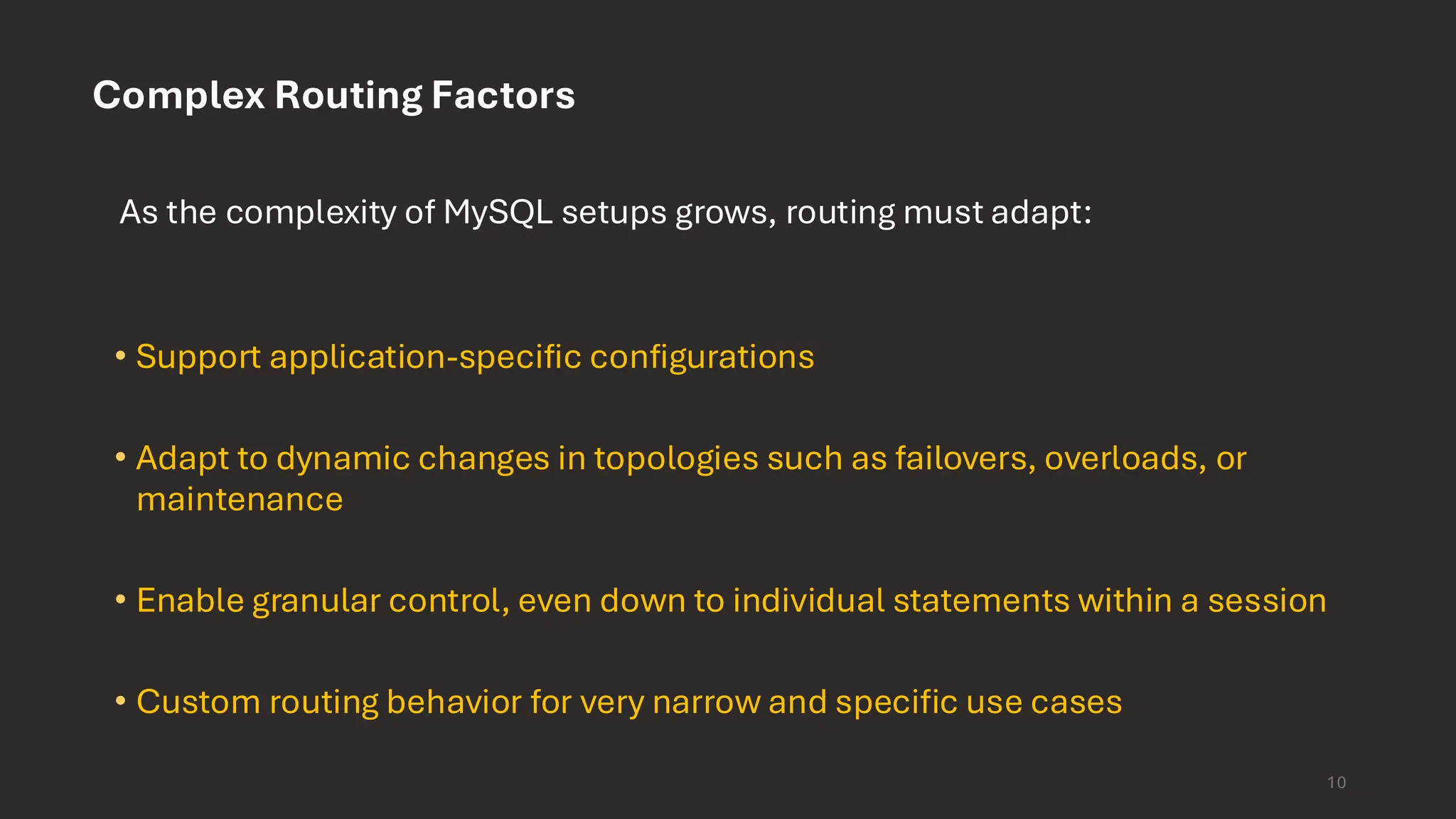
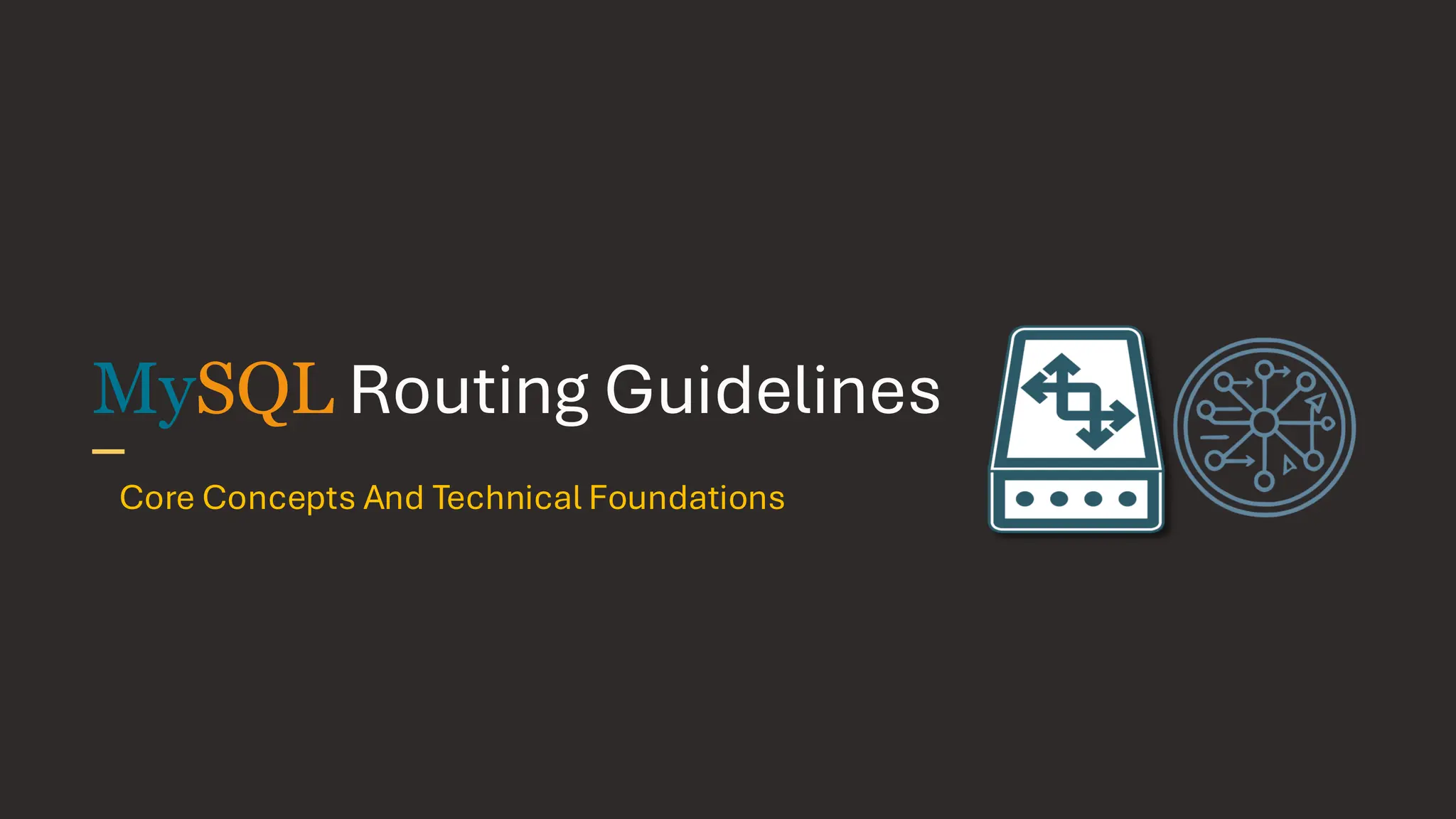
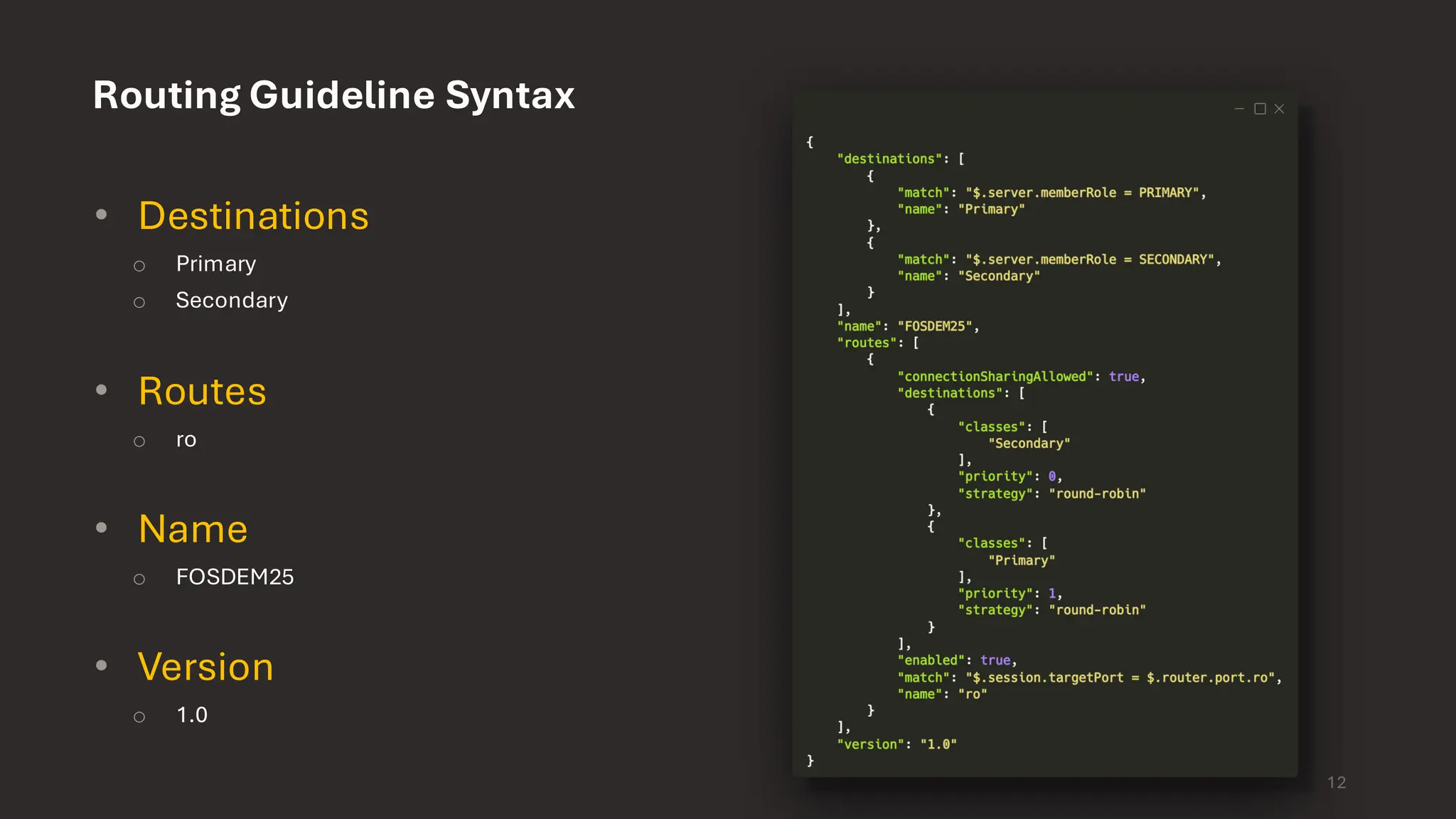
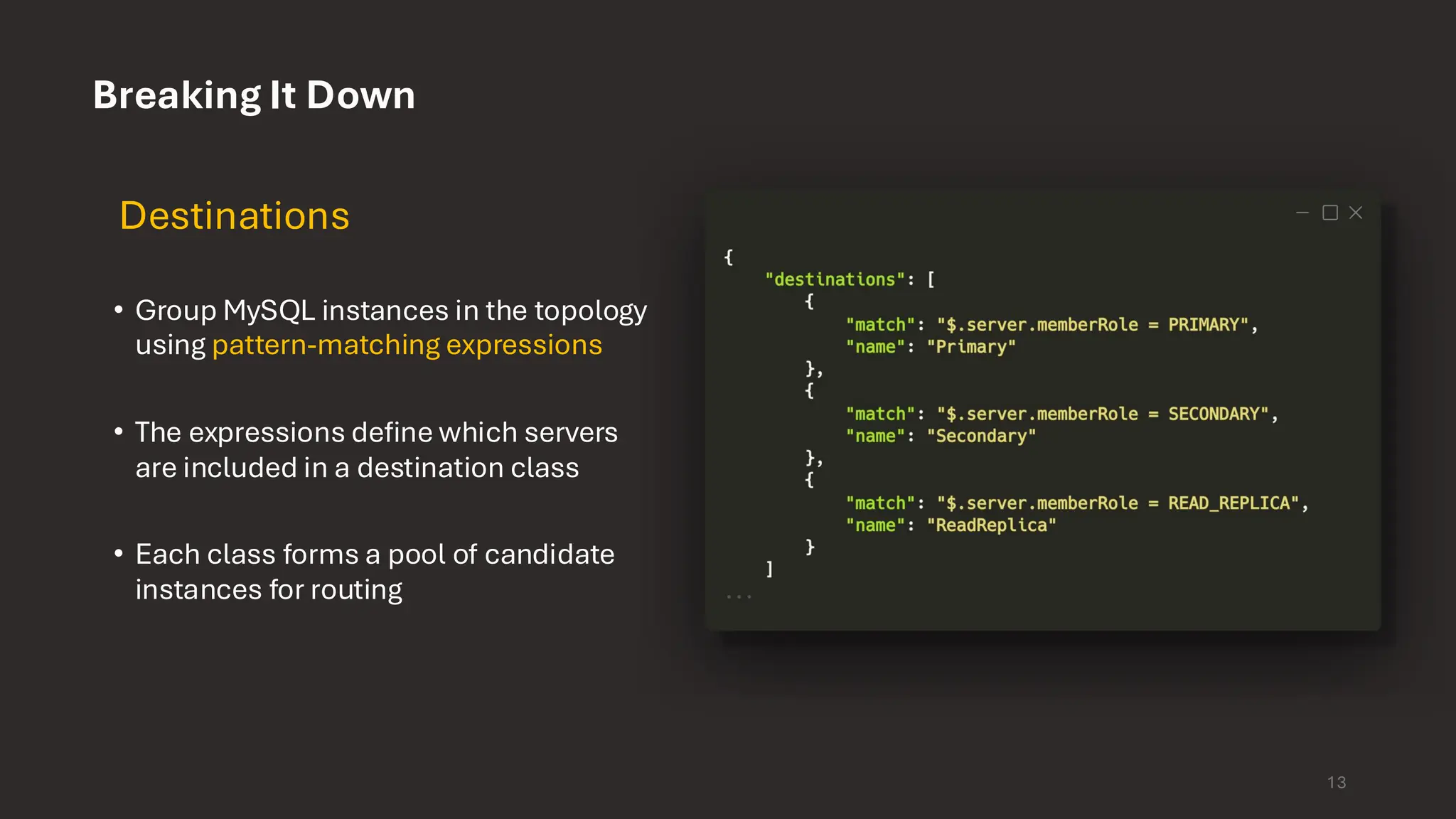
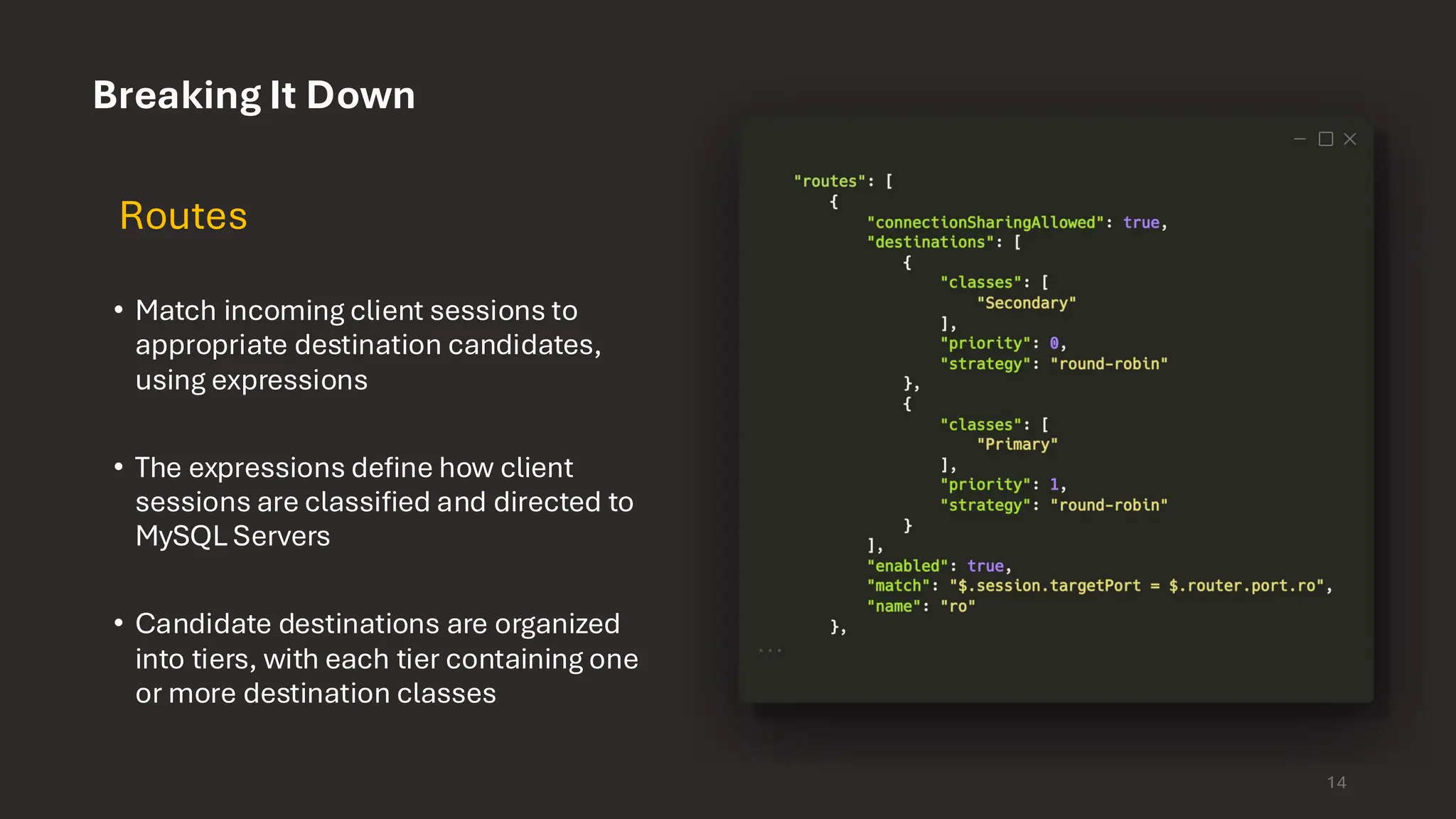
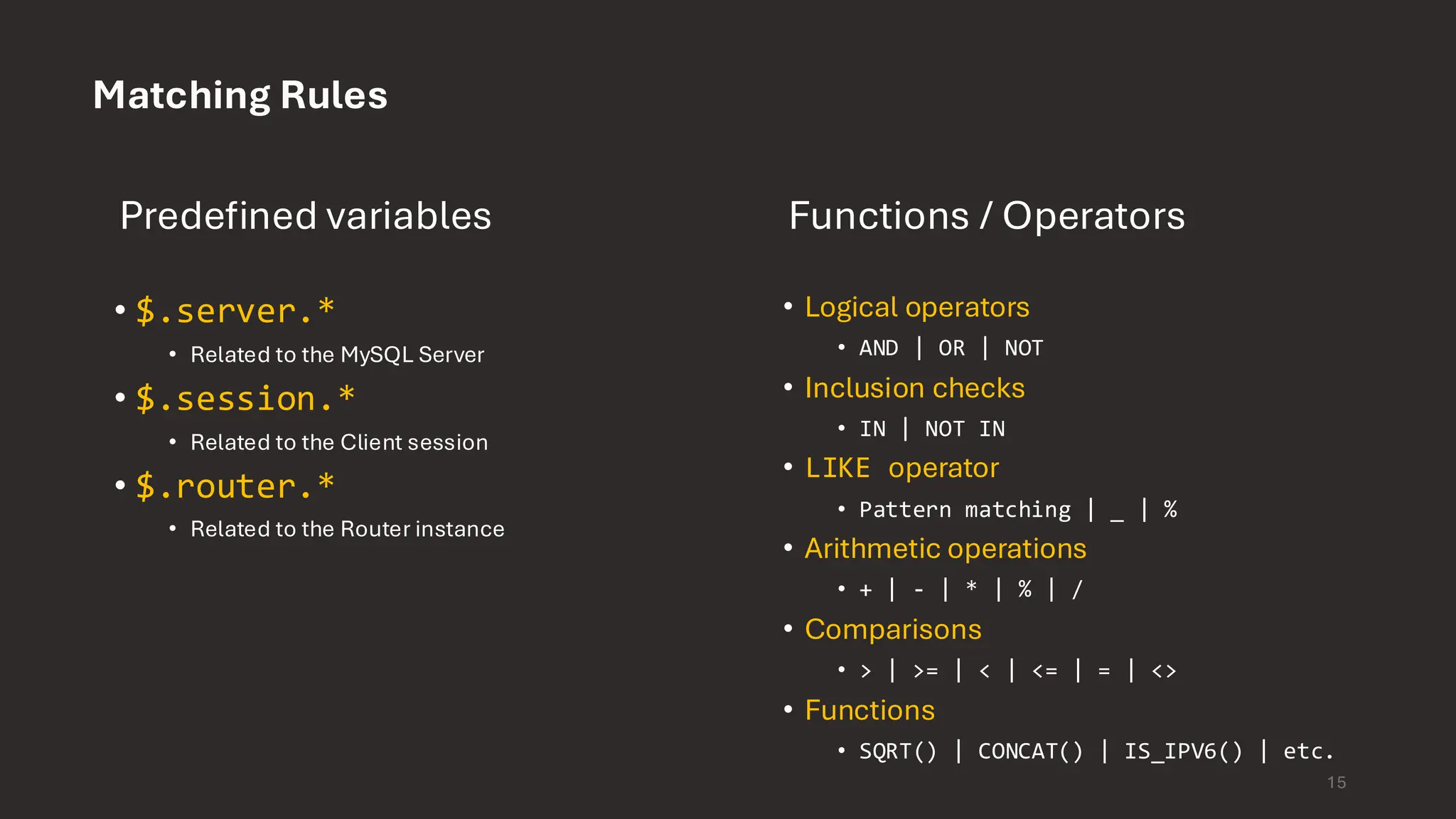
![Matching Expressions • Classify: Identify servers, sessions, or routers with logical conditions • Compose: Use variables, operators, and values to create matches • Chain: Link conditions with AND, OR, or NOT for flexibility (<function> | <variable>) [<operator> <value>] [<logical-operator> <expression>]* 16](https://image.slidesharecdn.com/mysqlroutingguidelinesfosdem25-250204160547-45fa96dd/75/Routing-Guidelines-Unlocking-Smarter-Query-Routing-in-MySQL-Architectures-16-2048.jpg)
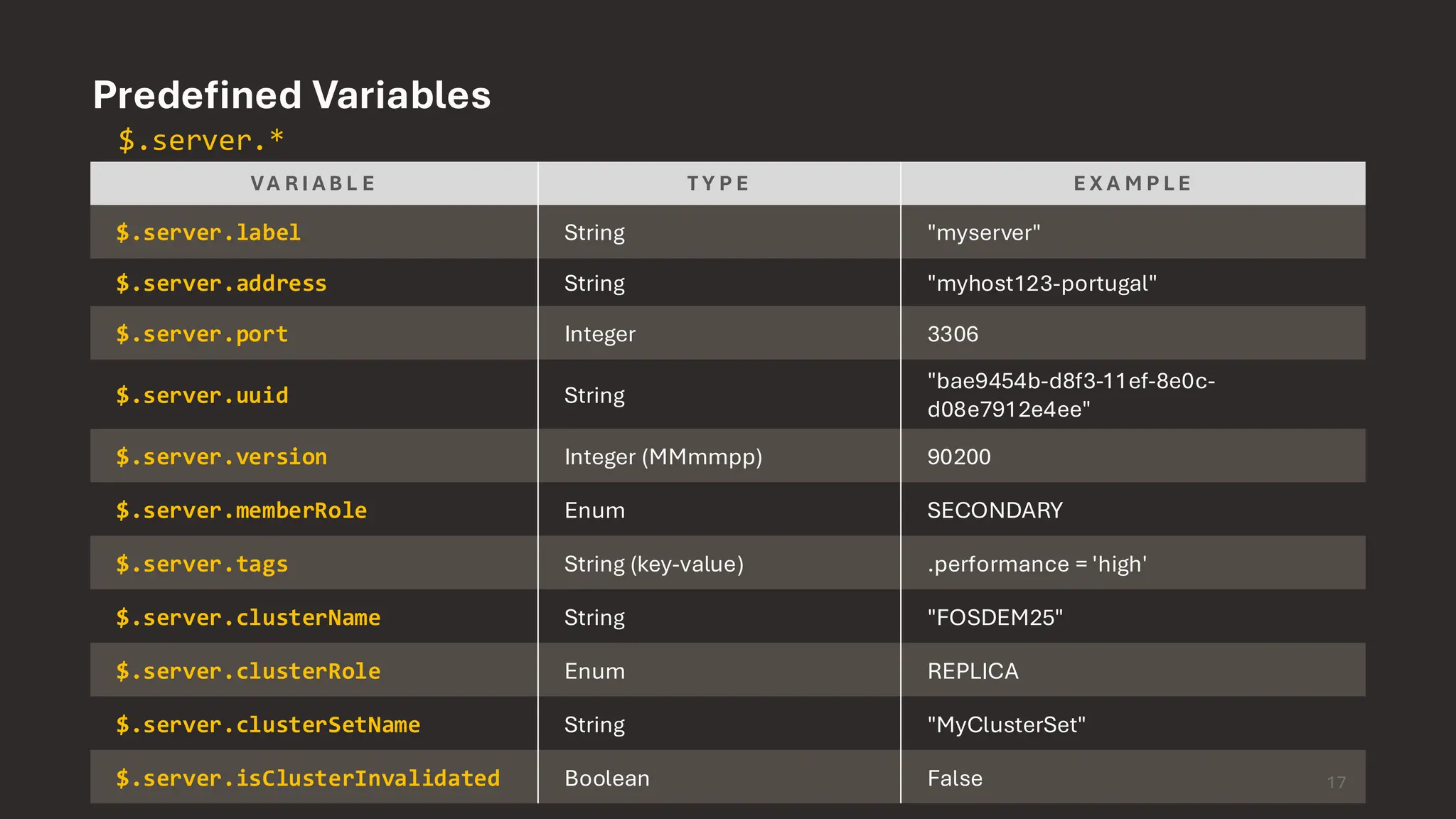
![Predefined Variables $.session.* VA R I A B L E T Y P E E X A M P L E $.session.targetIp String "192.168.1.235" $.session.targetPort Integer 6446 $.session.sourceIp String "10.1.103.12" $.session.user String "admin" $.session.connectAttrs String (key-value) ._os = 'Linux' $.session.schema String "world" $.session.randomValue Double [0, 1] 0.3 18](https://image.slidesharecdn.com/mysqlroutingguidelinesfosdem25-250204160547-45fa96dd/75/Routing-Guidelines-Unlocking-Smarter-Query-Routing-in-MySQL-Architectures-18-2048.jpg)
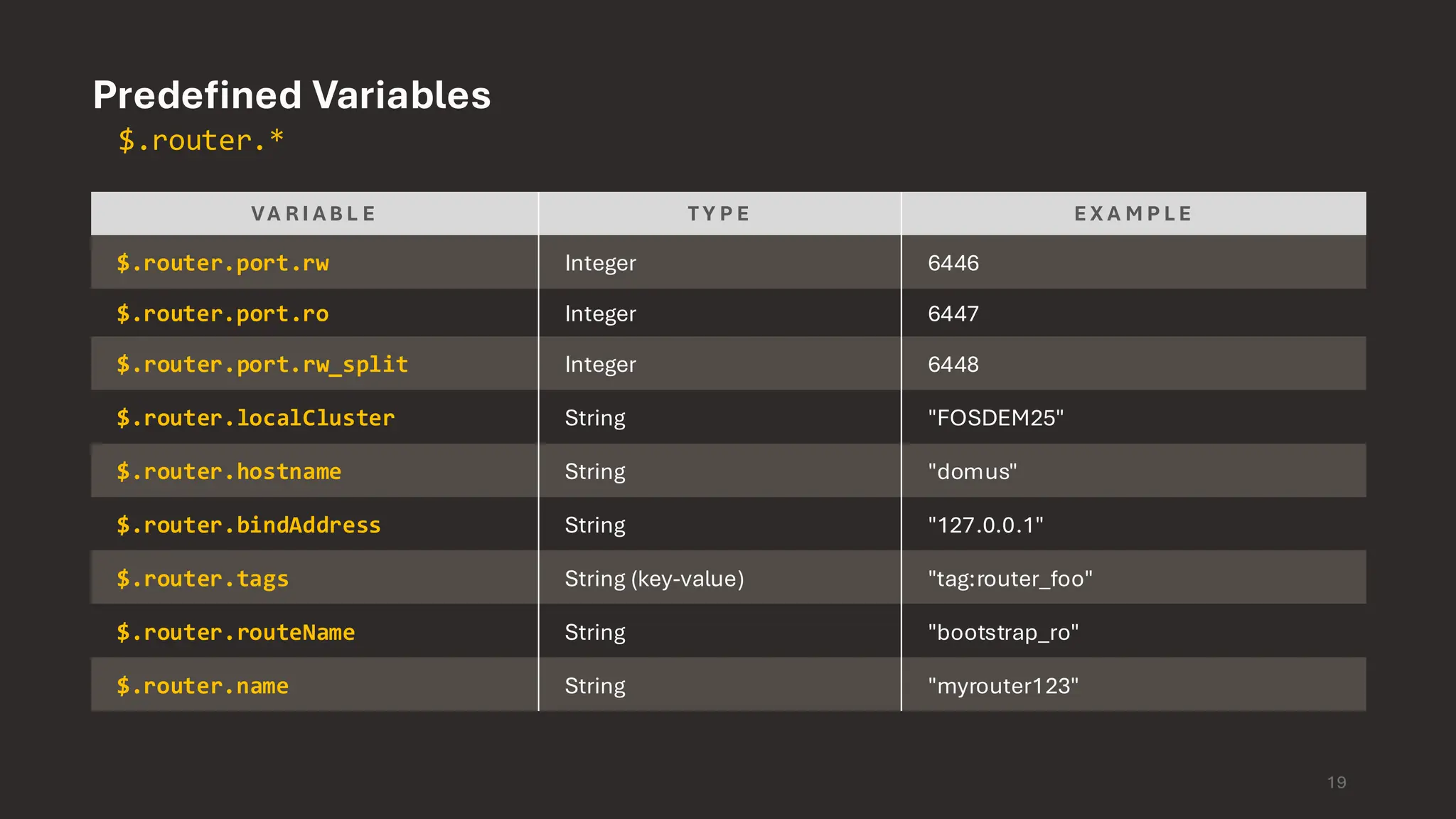
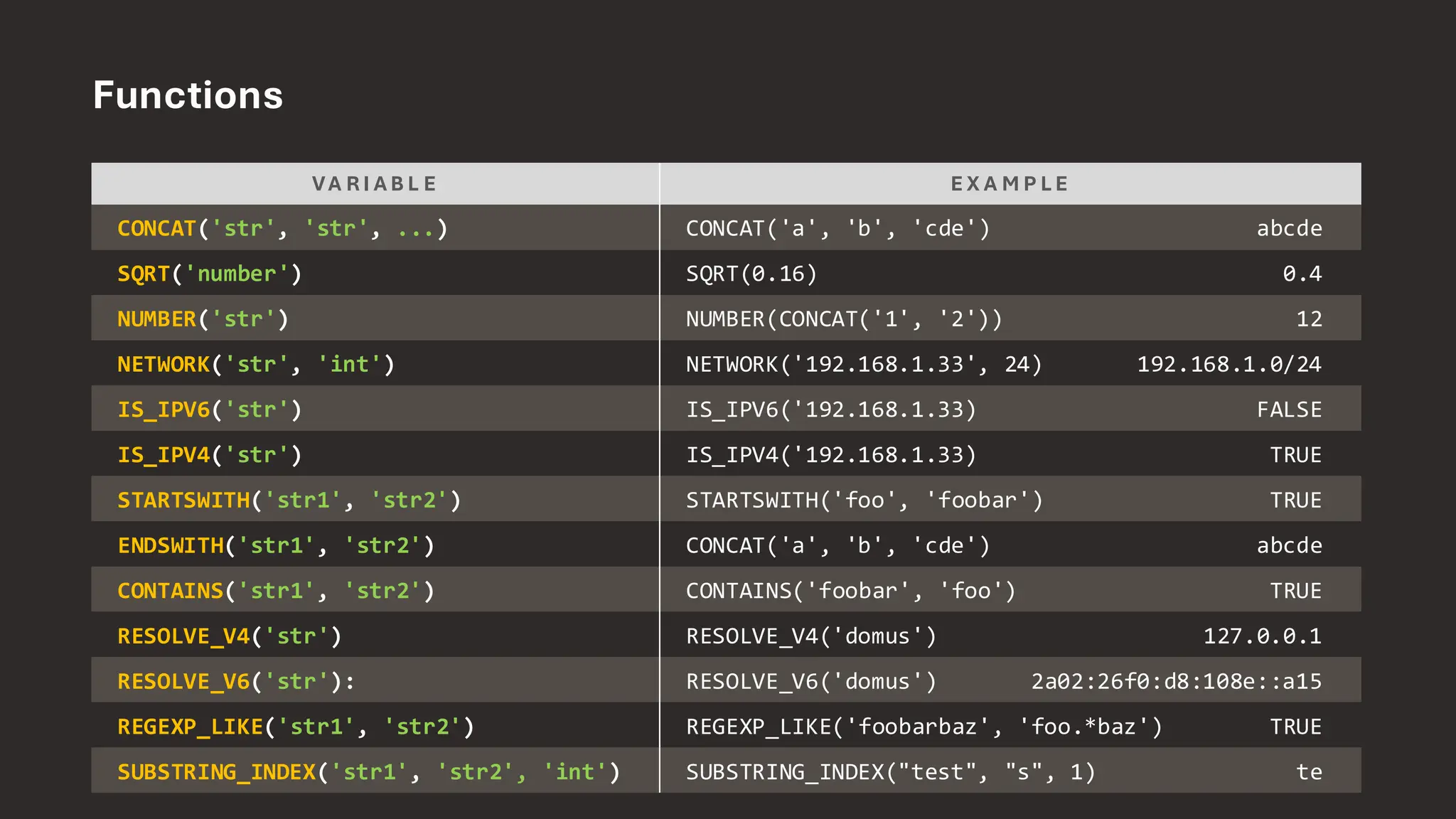
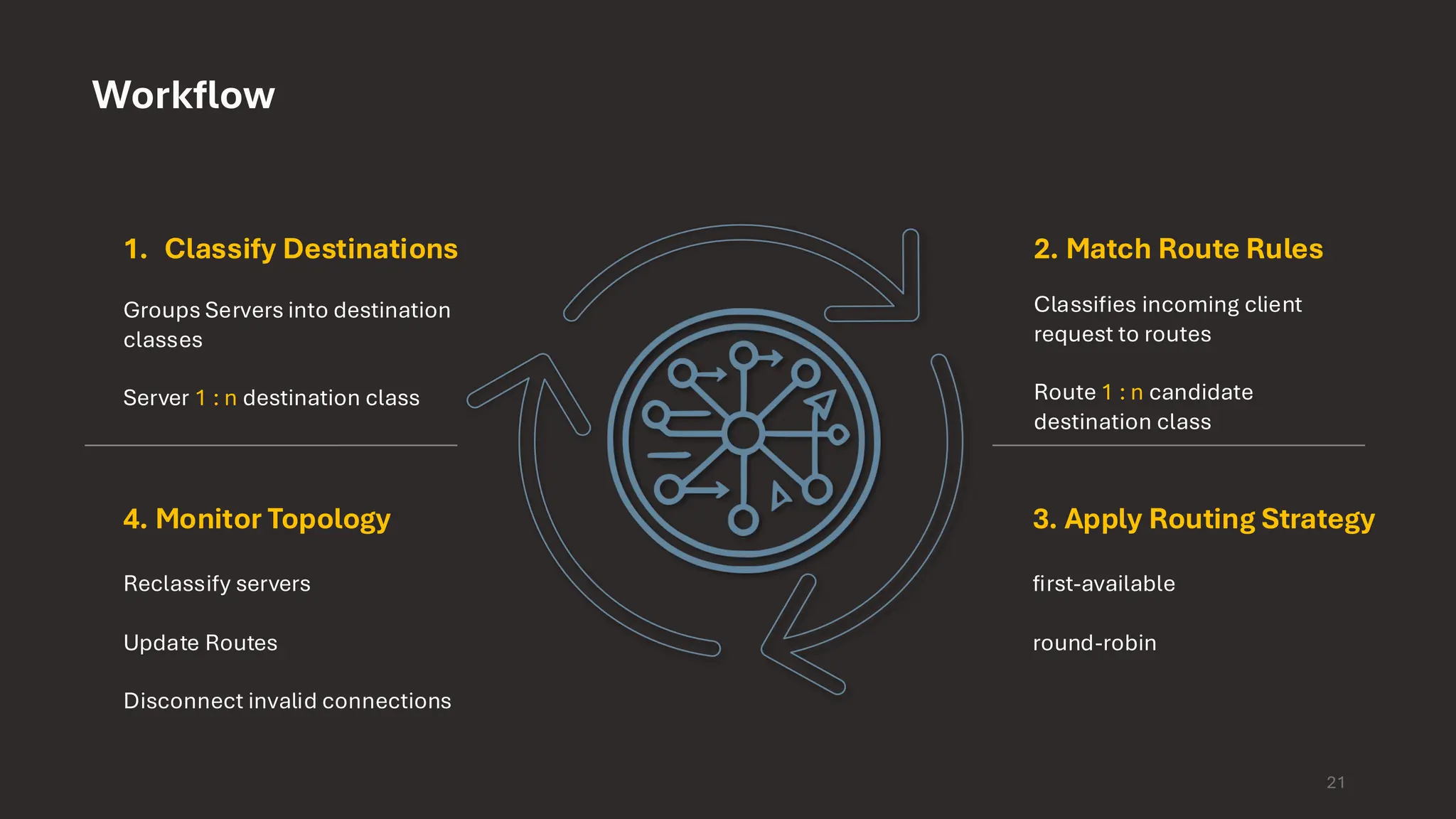
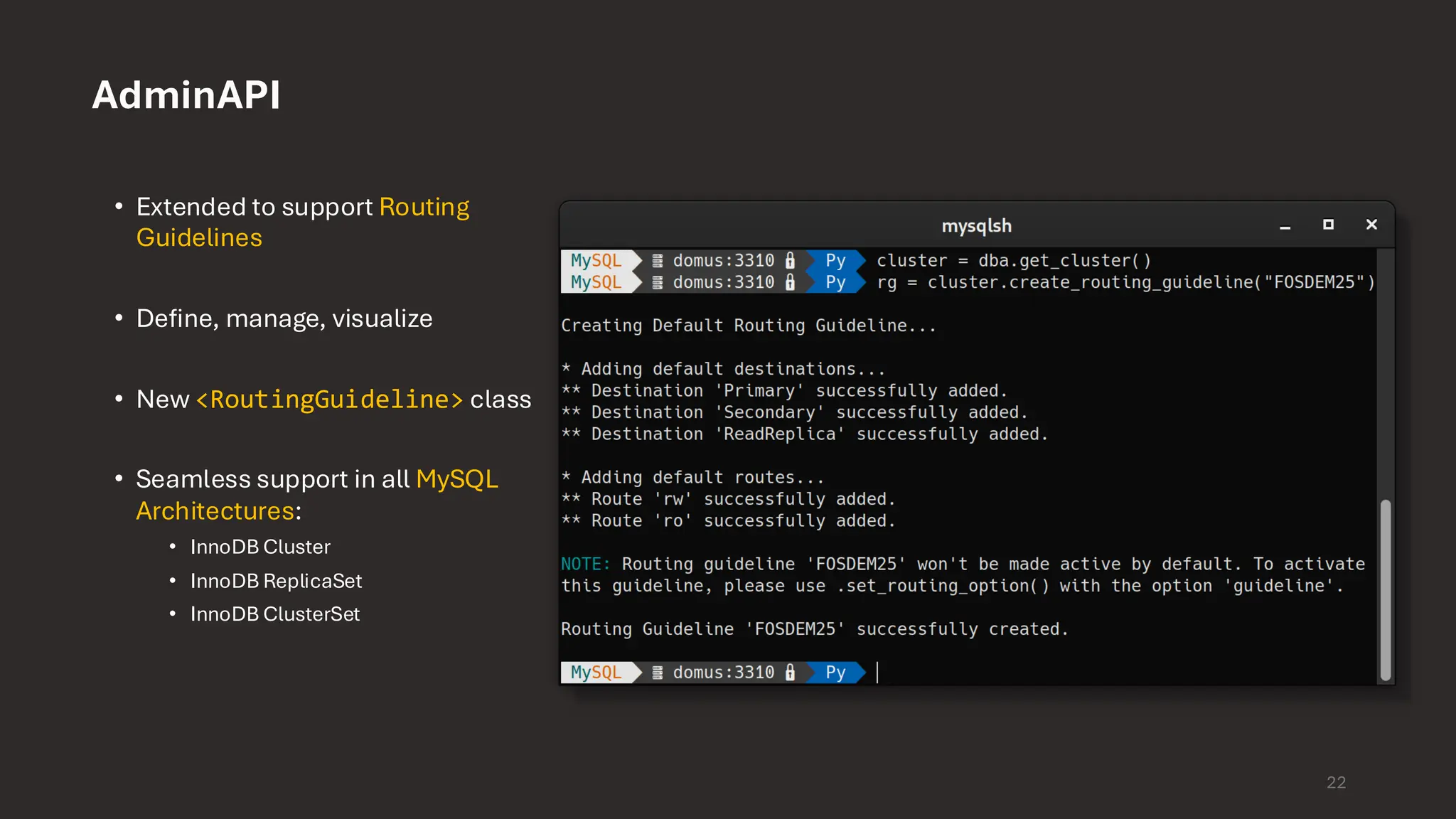
![AdminAPI C O M M A N D P U R P O S E .create_routing_guideline(name[, json[, options]]) Obvious .set_routing_option("guideline", name) New option "guideline" to activate a guideline in the target topology. .get_routing_guideline([name]) Evident .remove_routing_guideline(name) Clear .routing_guidelines() Lists all Routing Guidelines of the topology with some info .import(filePath) Imports a Routing Guideline stored in a .json file into the topology 23 <Cluster>, <ReplicaSet>, <ClusterSet>](https://image.slidesharecdn.com/mysqlroutingguidelinesfosdem25-250204160547-45fa96dd/75/Routing-Guidelines-Unlocking-Smarter-Query-Routing-in-MySQL-Architectures-23-2048.jpg)
![AdminAPI C O M M A N D P U R P O S E .show([options]) Displays a comprehensive summary of the Routing Guideline .as_json() Unambiguous .destinations() Explicit .routes() Unmistakable .add_route(name, match, destinations [, options]) Clear .add_destination(name, match, [, options]) Self-evident .remove_route(name) Lucid .remove_destination(name) Straightforward .set_destination_option(destinationName, option, value) Decipherable .set_route_option(routeName, option, value) Perceptible .copy(name) Visible .export(filePath) Exports the target Routing Guideline to a .json file .rename(name) Logical <RoutingGuideline>](https://image.slidesharecdn.com/mysqlroutingguidelinesfosdem25-250204160547-45fa96dd/75/Routing-Guidelines-Unlocking-Smarter-Query-Routing-in-MySQL-Architectures-24-2048.jpg)
